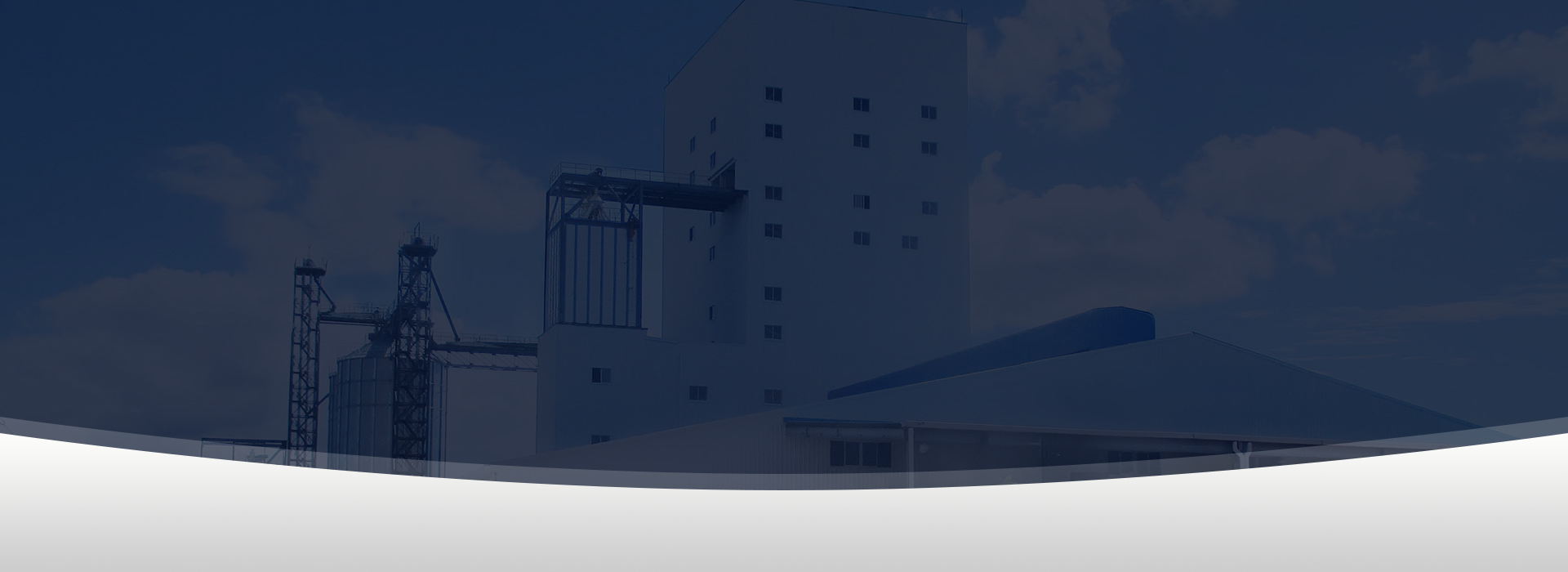
hen feed Making machine
Hen feed making machine is very important chicken feed equipment, mainly used for processing hen powder feed, pellet feed and crumbs feed.
Generally speaking, hen feed equipment mainly includes crushing equipment, mixing equipment, cooling equipment, packaging equipment, pelleting equipment, pellet crumbling machine, etc.
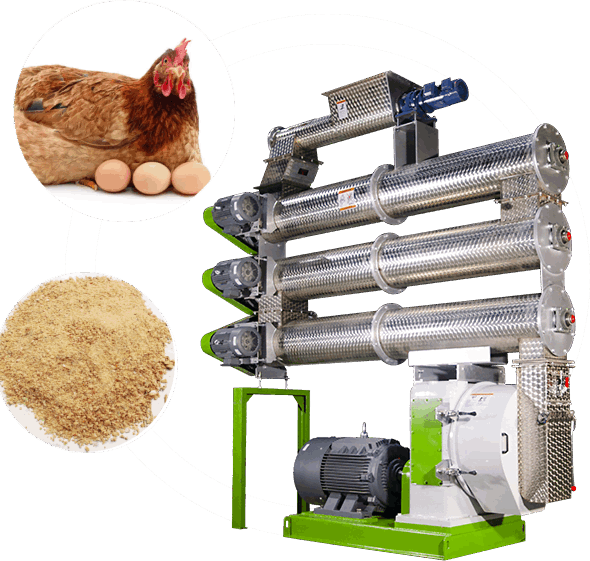
RICHI Machinery is a top hen feed machine supplier and manufacturer in Asia, specialized in chicken feed making machines for many years. We focus on technology research and development.
- Capacity: 1-100T/H
- Hen Feed Machine Price: 10,000-2,800,000 USD
- technology type: aging powder process, traditional powder process, Pelleting process, Crumbling process
- Applicable customers: hen feed plant, laying hen farms
- Business scope: Newly built laying hen feed factory, renovation of laying hen feed factory
- Application: Suitable for different types of laying hens, capable of processing mash feed and 1-6mm feed pellets
Our hen feed making machine, layer feed making machine, chicken feed mill and poultry feed machine can maximize the function and provide great profit and convenience for you. Only continuous innovation can promise high quality products! Buy from RICHI, and we promise to offer you the most favorable hen food making machine price, feel free to contact as for more information!
Hen feed production requirements
The production cycle of hens is one and a half years, including about 6 months of brooding and rearing and about 1 year of laying period. Egg weight and egg production gradually increase at the beginning of the laying period, and egg production gradually decreases after reaching the peak.
- The feed for laying hens generally uses powdered feed with large particles, which is not only suitable for the physiological digestion characteristics of laying hens and meets the energy density requirements of laying hens, but also ensures that the chickens eat for a long time, so that the excessive energy intake of the laying hens can be consumed.
- The large-particle powdered feed has a reasonable formula and suitable material type, which can ensure that the egg production rate of laying hens is as high as 90%.
At the same time, the production of laying hens is affected by factors such as disease and feed, which makes the production of laying hens somewhat unstable.
Therefore, during the raising of laying hens, the feed should be ensured to be clean, safe, and free of pollution. At the same time, the survival rate of chicks and egg production are affected by seasonal factors, making the production of laying hens somewhat seasonal.
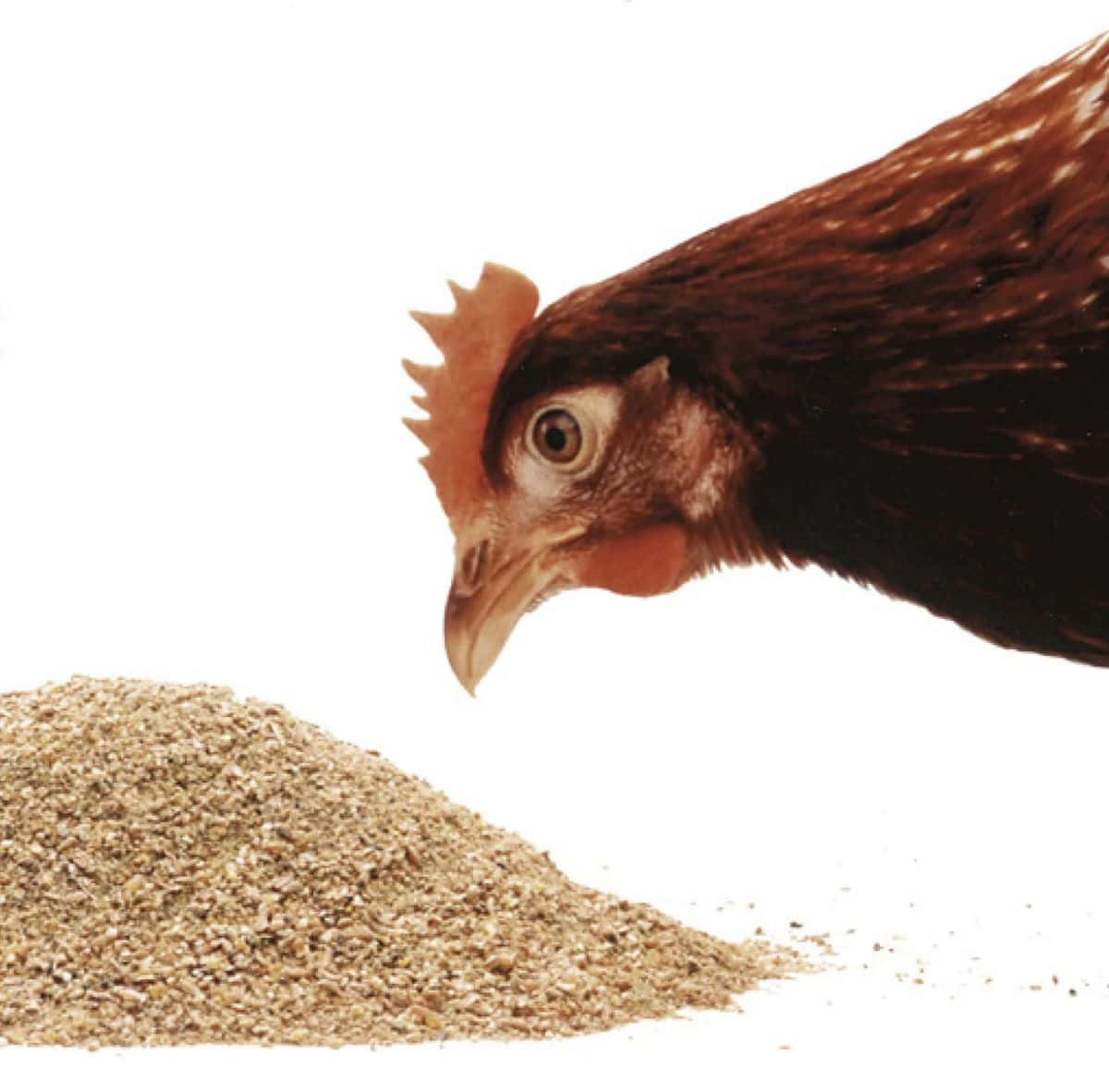
(Laying Hen Feed Processing Is Divided Into Two Types: Powdered Feed Processing And Granular Feed Processing: Powdered Feed Is Easy To Process And Produce, And The Cost Is Low. Therefore, It Is Widely Used In Laying Hen Feed, Accounting For More Than 95%.)
machine for making laying hen feed
Layer feed making machine mainly includes cleaning equipment, feed grinders, mixers, hen feed pellet machine, egg laying block making machines, hen feed extruders, coolers, packaging scales and other equipment. The following is a list of common laying hen feed equipment:
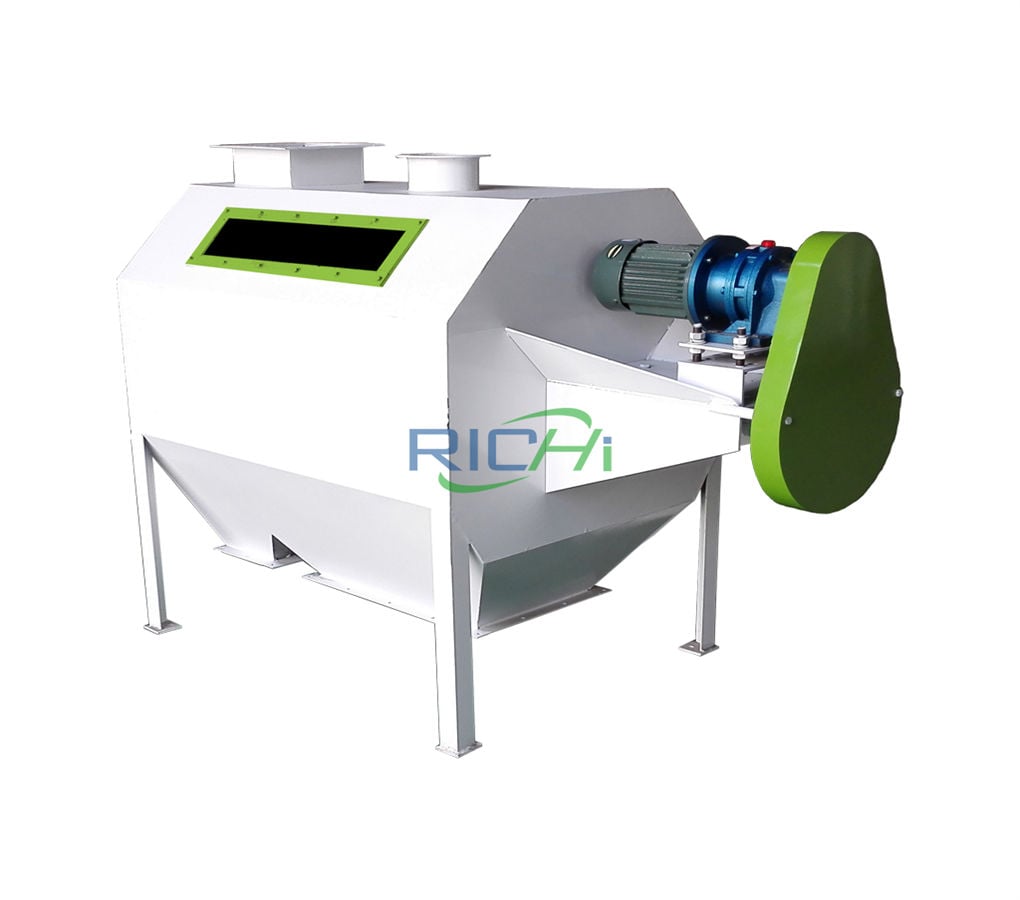
Cylindrical primary cleaning screen
Appropriate sieve holes can be selected according to the material properties to achieve the required separation effect. It has good cleaning effect and high impurity removal efficiency, and the efficiency of removing large impurities can reach 99%;
- Capacity: 15-50 T/H
- Power: 0.75-1.5 KW
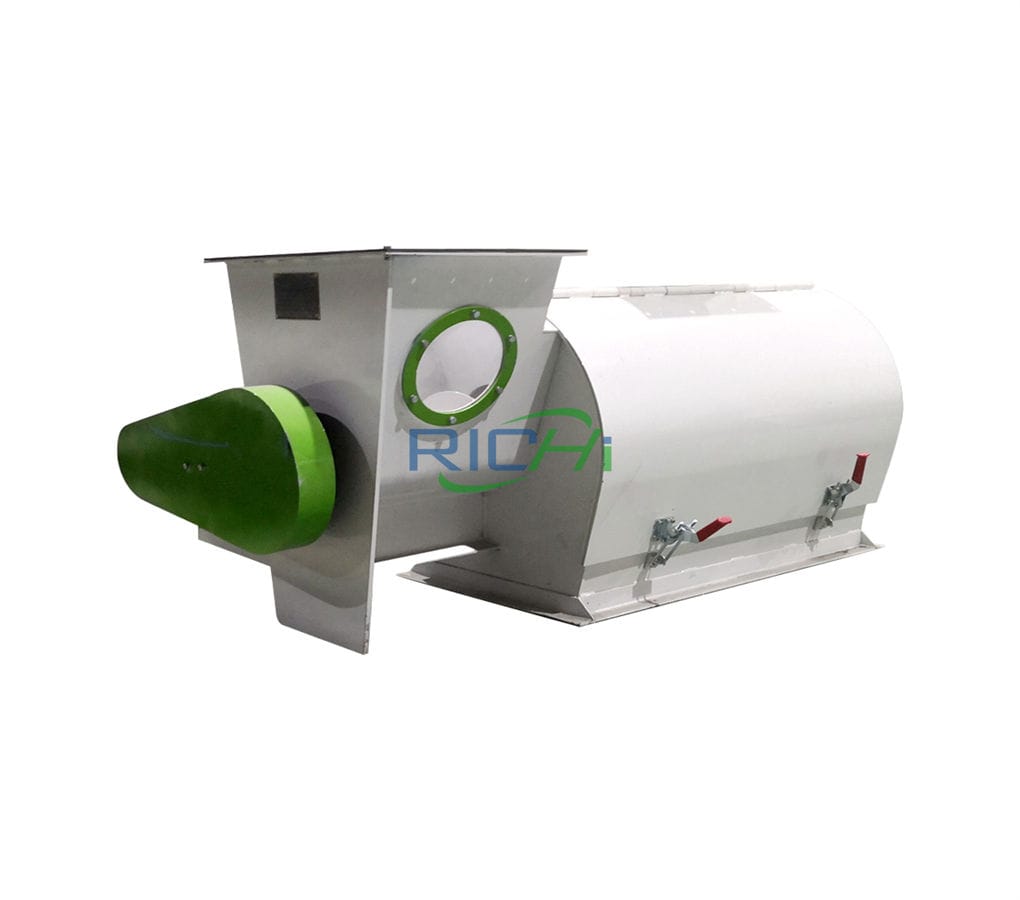
Powder cleaning screen
It is suitable for cleaning powdery raw materials in feed factories and grain factories. It can effectively separate large impurities such as straw, stones, hemp chips, paper, and agglomerates mixed in powdery materials.
- Capacity: 10-30 T/H
- Power: 5.5-7.5 KW
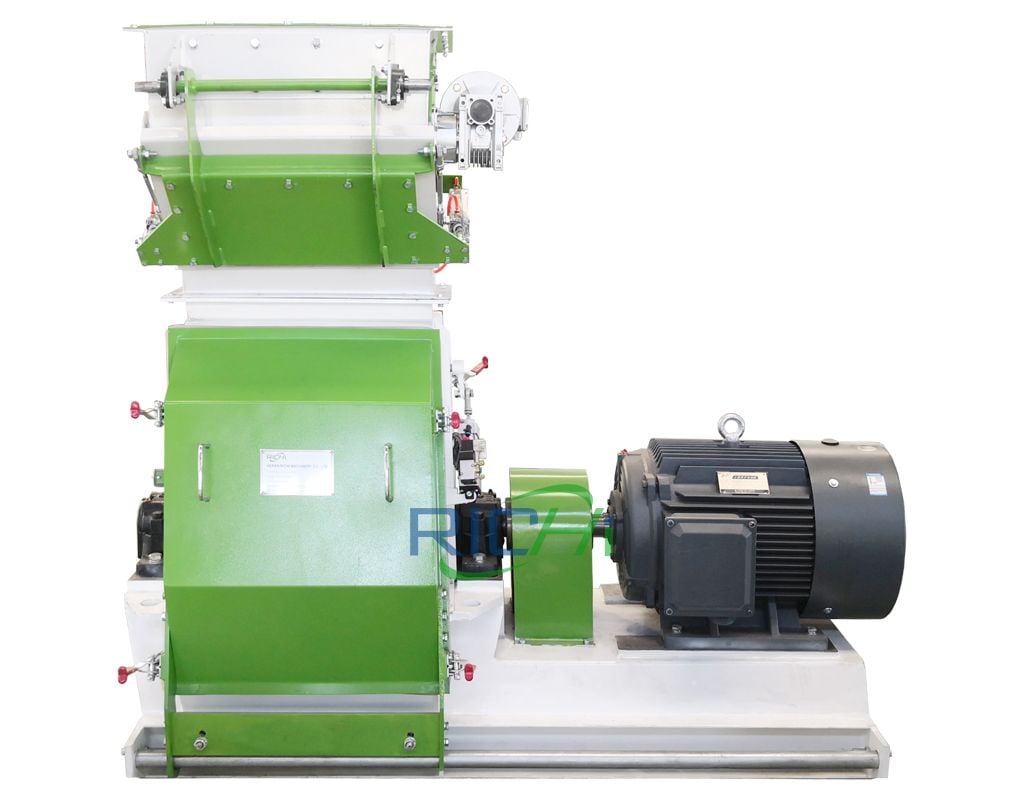
hen feed grinding machine
The crushing chamber of the hammer crusher adopts a drop-shaped structure, and is equipped with a re-crushing chamber and shearing device at the lower part, which improves the crushing efficiency; the rotor is specially designed with two different hammer and screen gaps to meet the requirements of different crushing particle sizes.
- Capacity: 3-25 T/H
- Power: 30-160 KW
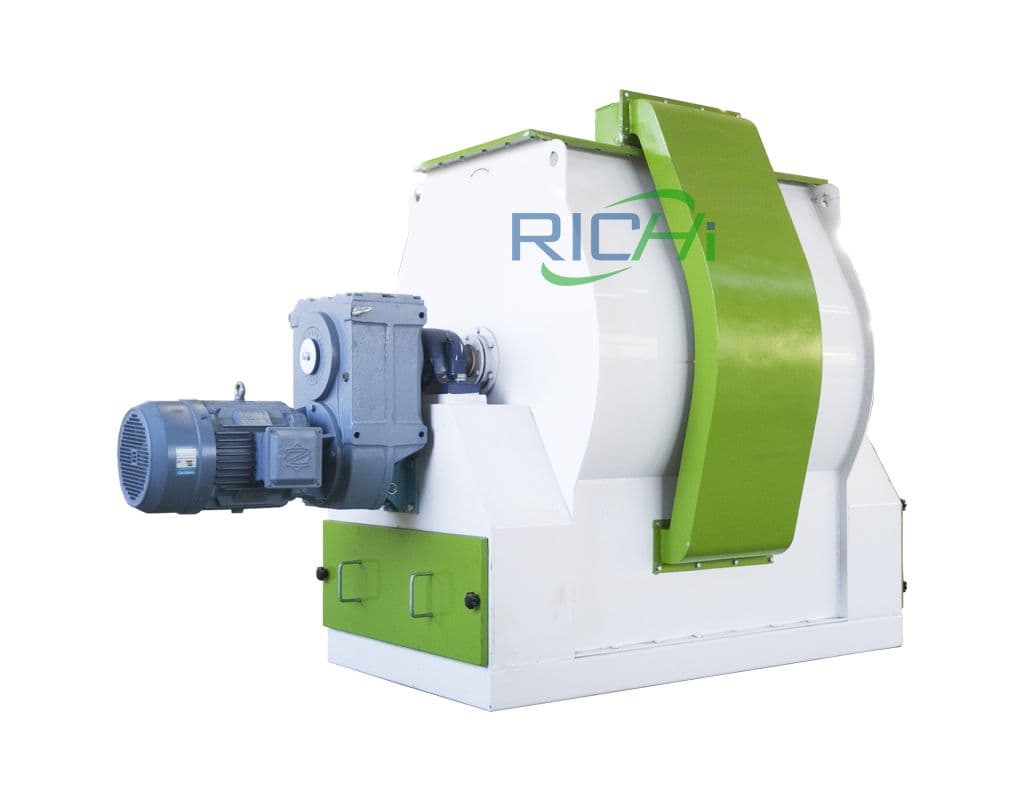
Hen feed Mixer machine
Low-speed operation, high-efficiency mixing, long-term mixing without segregation, various liquids can be added, full-length double-door discharging, rapid discharging, low residue, smooth and reliable rotation, widely used in compound feed plants, concentrated feed plants and chemical industry, Food, flour and other industries.
- Capacity: 250-3000 KG/P
- Power: 4-55 KW
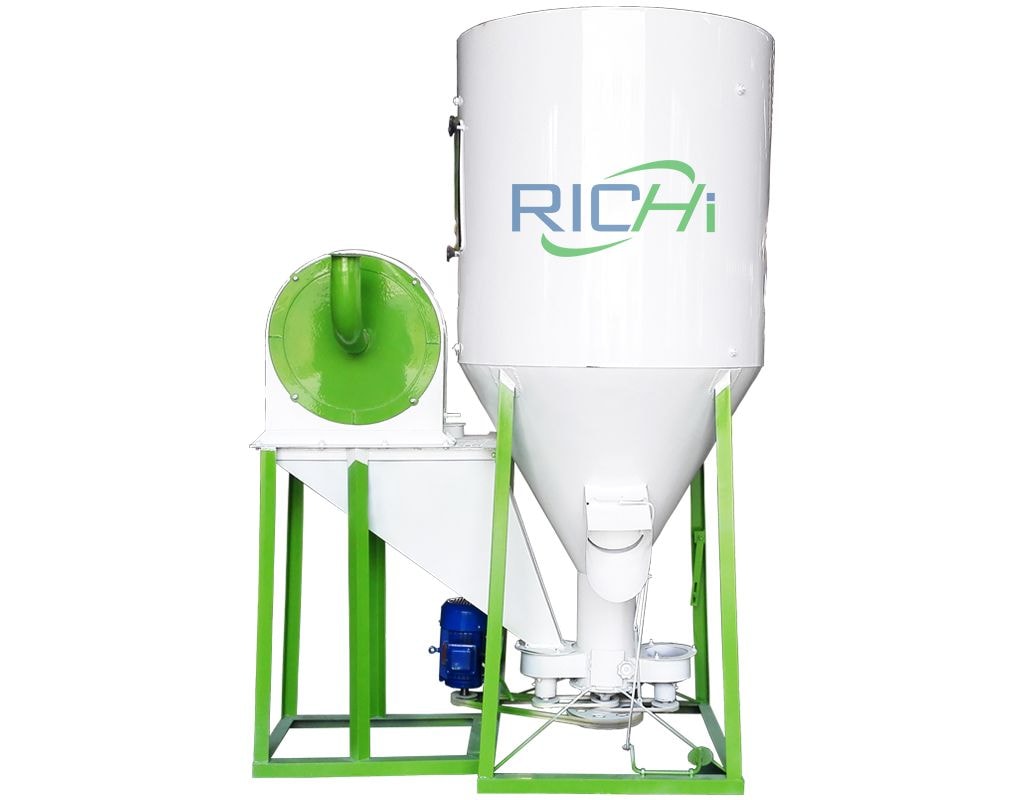
Grease adding equipment
This machine is used to add grease or other liquids when mixing compound feed, and is suitable for batch mixers. The maximum addition amount of this machine generally does not exceed 3% of the mixer capacity, otherwise the granulation effect will be affected.
- Adding Rate: 50-200 L/Min
- Power: 2.2-5.5 KW
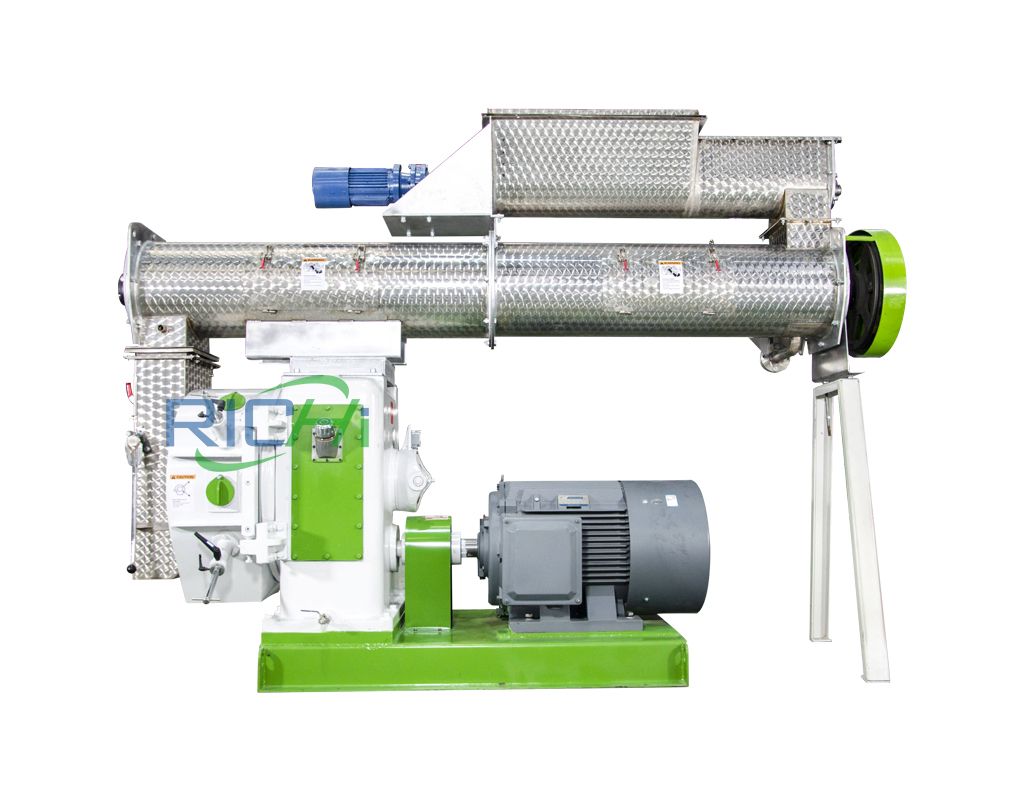
hen feed pellet machine
Adopts imported high-quality SKF bearings to ensure smooth and reliable operation; the pressure roller is maximized in design to effectively improve production capacity. This model is available in multiple sizes between Φ1.5-Φ12 Ring dies with three hole diameters and thicknesses and two working widths.
- Capacity: 1-42 T/H
- Power: 22-315 KW
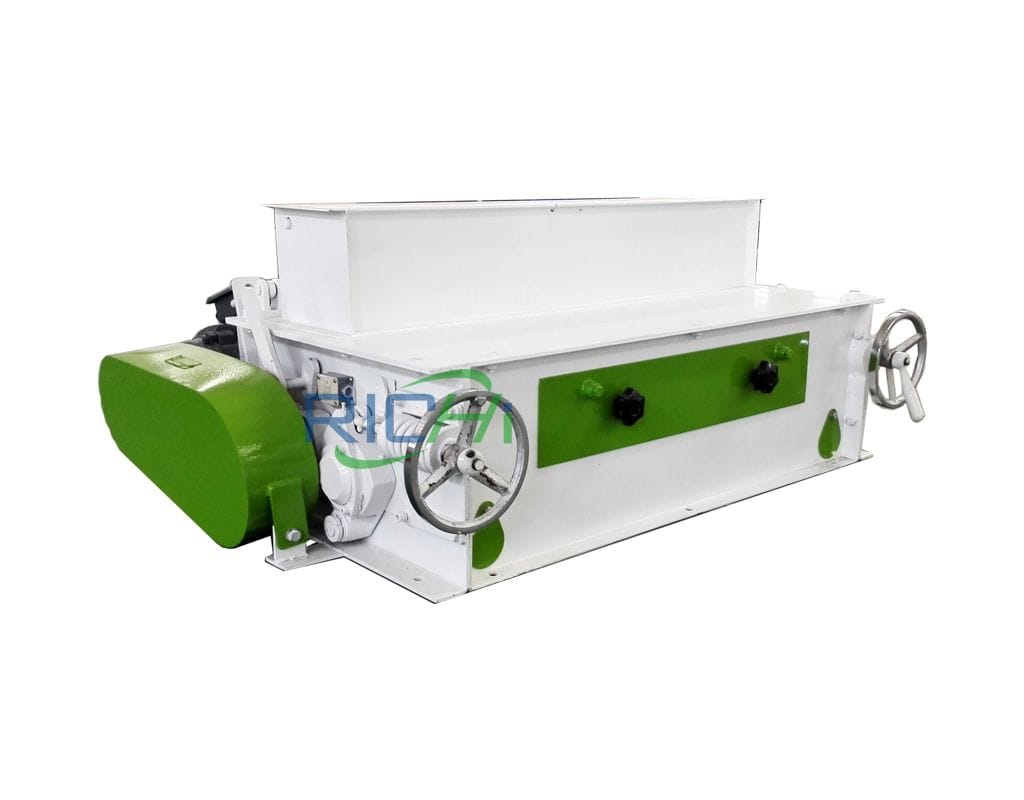
Pellet crumbler machine
Suitable for breaking large pellets into small pellets when producing chicken feed and aquatic products. The unique differential speed principle of double rollers with different tooth shapes is used to crush Φ1.5~Φ5.0mm pellet feed, with high yield and less grading return.
- Capacity: 2-20 T/H
- Roller: 2-3
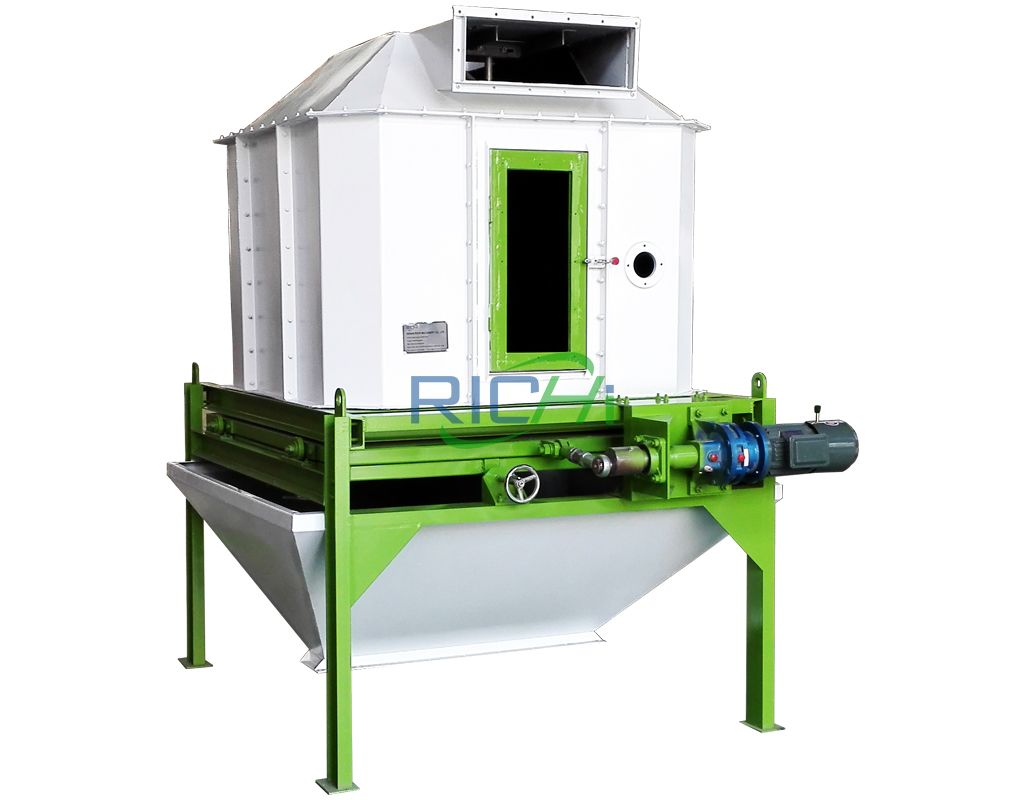
Pellet Cooler machine
Counterflow feed pellet cooling machines are widely used in the cooling processing section of the feed industry and are suitable for cooling various pellet feeds, such as pelleted feeds, expanded feeds and other feeds.
- Capacity: 1.5-18 T/H
- Power: 0.75-2.05 KW
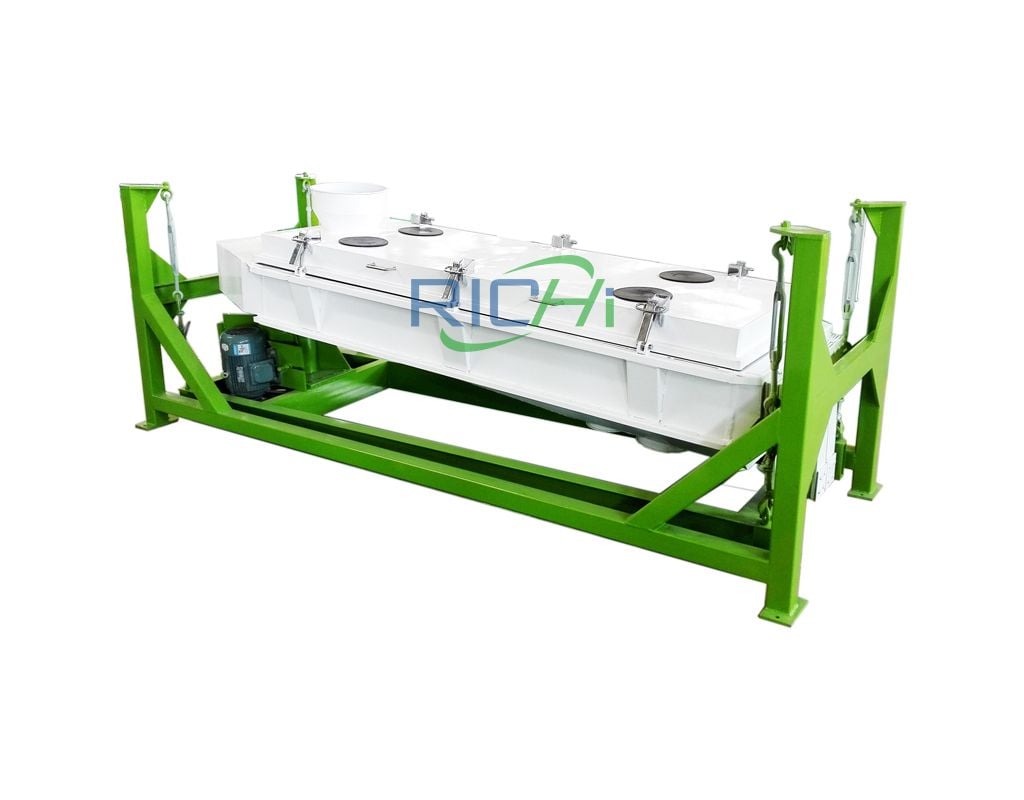
vibrating screening machine
It adopts a special balancing method to reduce vibration, adopts imported SKF bearings to reduce noise, runs smoothly, and works stably and reliably; the fast screen pressing structure makes screen replacement quick and easy.
- Capacity: 3-20 T/H
- Power: 1.5-5.5 KW
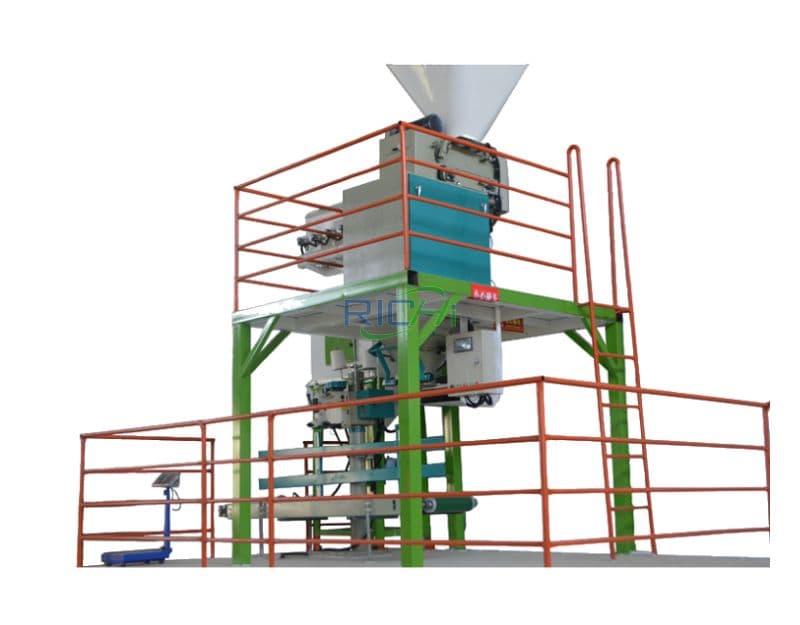
Automatic Bagging Machine
The packaging scale adopts a unique anti-seismic device to ensure measurement accuracy, fast packaging speed, and can work stably under complex working conditions. The machinery is adjusted externally for easy maintenance.
- Speed: 6-12 Bags/Min
- Power: 1.1-5 KW
How to make hen feed mash and pellets?
At present, there are three types of feeds used in laying hen breeding, namely: compound feeds produced by feed factories, feeds prepared and produced by farms (households) using premixed feeds according to recommended formulas, and feeds formulated with concentrated feeds and energy feeds.
In comparison, layer feed mills and large laying hen farms have relatively complete layer feed production processes and advanced equipment, while medium and small farms (households) generally use feed units.
The laying hen feed processing technology is relatively simple, and the process includes: raw material cleaning, crushing, batching, mixing and finished product packaging or bulk delivery. Whether it is a hen feed factory or a breeding farm, crushing and mixing are indispensable processes.
The complete laying hen feed production process is usually equipped with a hammer crusher and a hen feed mixer, while the feed unit uses a claw-type mixer. Crusher and mixer are the main ones. Different hen feed processing machine has a greater impact on the quality of hen layer feed processing.
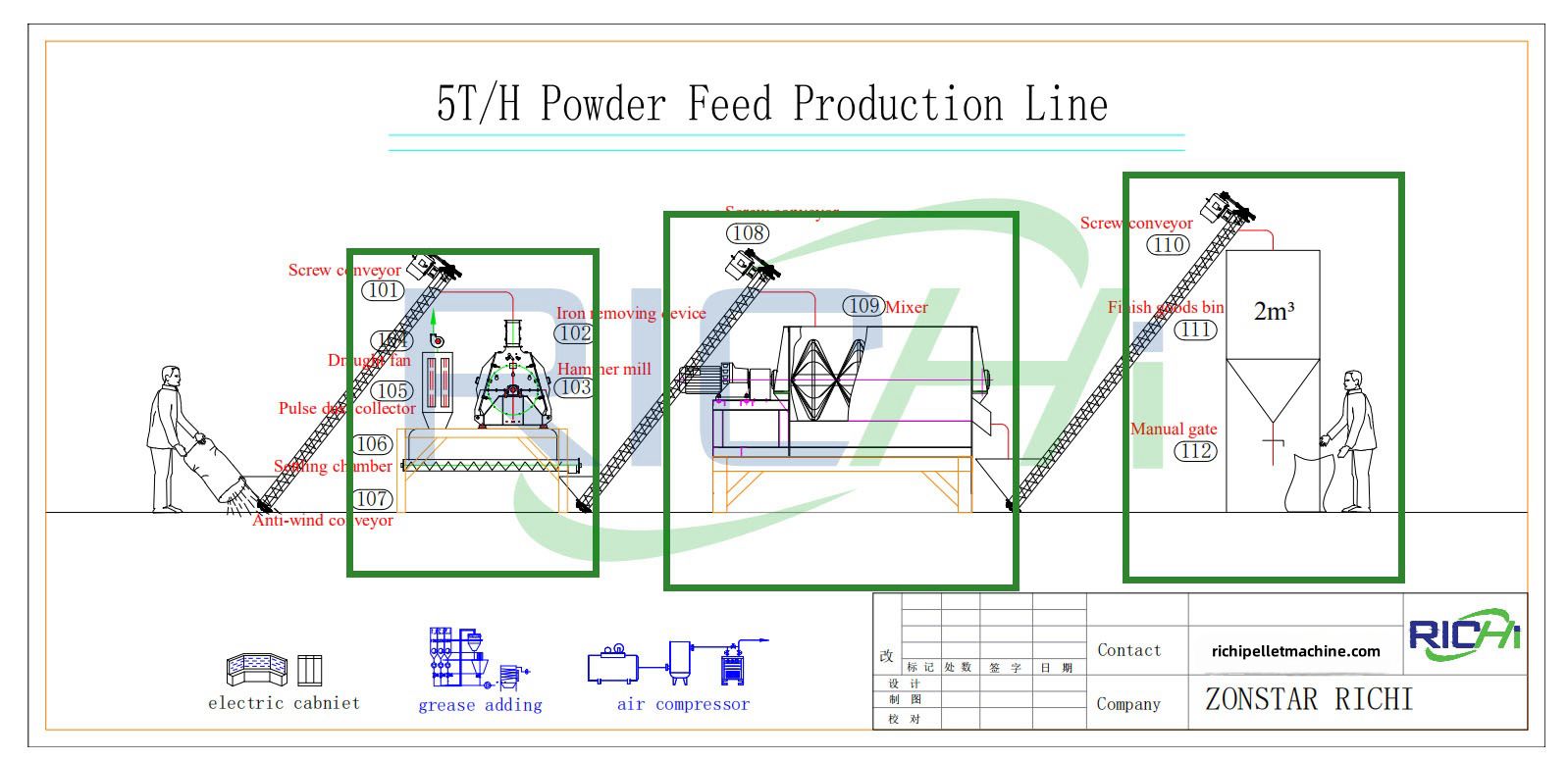
01 Raw material preparation
Before making layer feed, the required raw materials need to be prepared first, including additives such as protein, minerals, vitamins, and basic feed such as corn, soybean meal, etc.
02 Raw material inspection
Strict inspection must be carried out before raw materials are put into storage to ensure that the quality of raw materials meets production requirements. The inspection content includes the appearance, moisture, nutritional content, etc. of the raw materials.
03 Crushing process
The raw materials are crushed through a hen feed pulverizer machine to turn the raw materials into fine particles to facilitate subsequent mixing and granulation.
04 Screening process
The crushed raw materials need to be screened through a screening machine to separate raw materials of different particle sizes to facilitate subsequent mixing and granulation.
05 Mixing process
The crushed and screened raw materials are mixed together in a certain proportion to form the basic formula of the feed. Put the mixed raw materials into a mixer and stir to fully mix the raw materials evenly to improve the nutritional value and palatability of the hen feed.
If you want to process powdered feed for laying hens, it can be packaged directly after mixing. If pellet feed is to be processed, continue with the next process. As of this process, have answered many people’s questions about “how to make layer mash for chickens”.
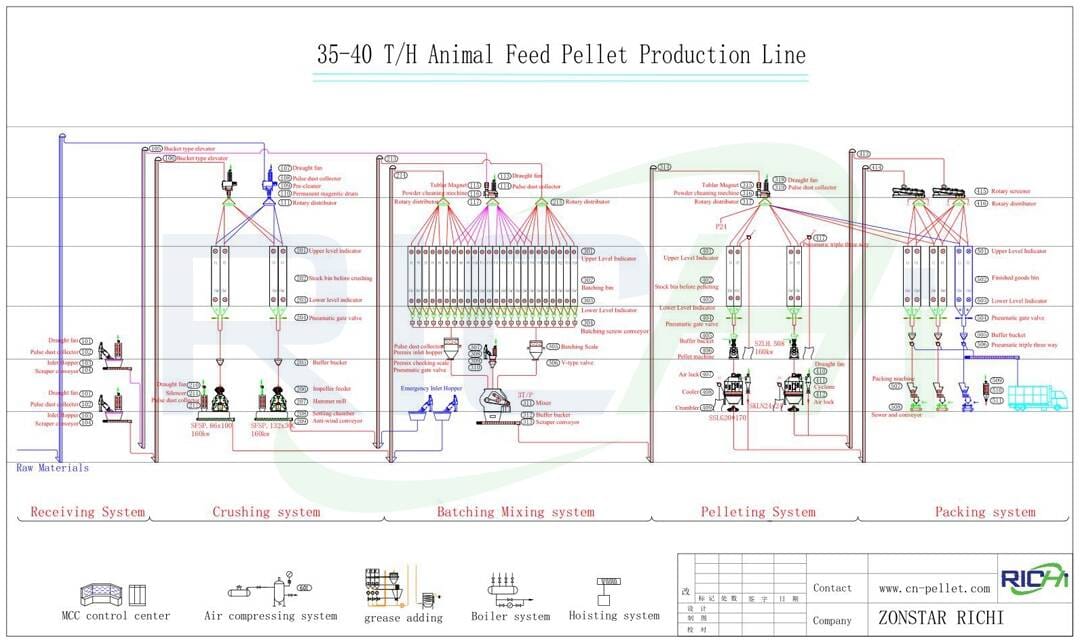
06 Pelleting process
Put the stirred raw materials into the chicken feed pellet machine for granulation to form hen feed pellets of a certain shape and size.
07 Cooling process
The granulated pellets need to be cooled to remove excess moisture and reduce the temperature of the particles to ensure the stability and storage of the particles and facilitate subsequent packaging, storage and transportation.
08 Crumbling process
According to the customer’s product needs, a layer hen feed pellet crumbler machine can be configured to crush the cooled granules again to obtain smaller-sized granular products.
09 Screening process
The cooled and crumbled hen feed pellets need to be screened to separate pellets of different sizes to ensure product quality and consistency.
10 Packaging process
The screened hen feed pellets are packaged according to certain specifications to form finished products. The packaging should be tight, moisture-proof and pollution-proof.
11 Storage and transportation
Finished products need to be properly stored and transported to ensure product quality and safety. During storage and transportation, attention should be paid to moisture-proof, sun-proof, fire-proof and other measures.
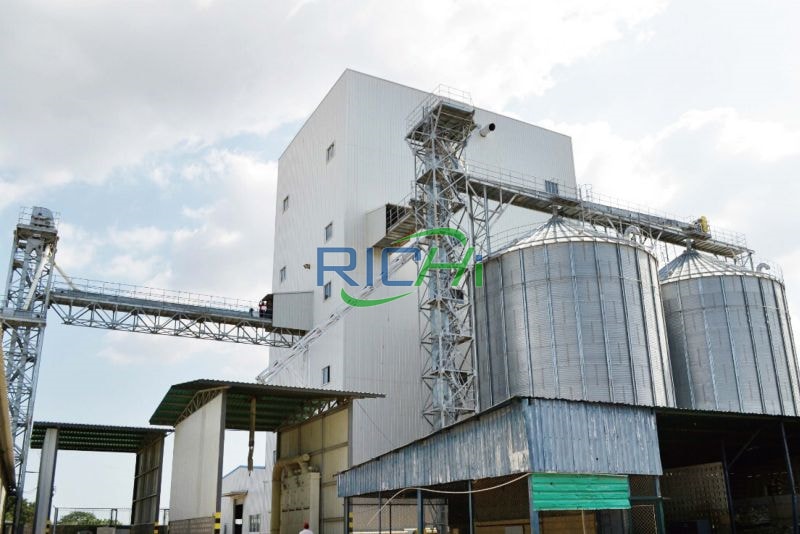
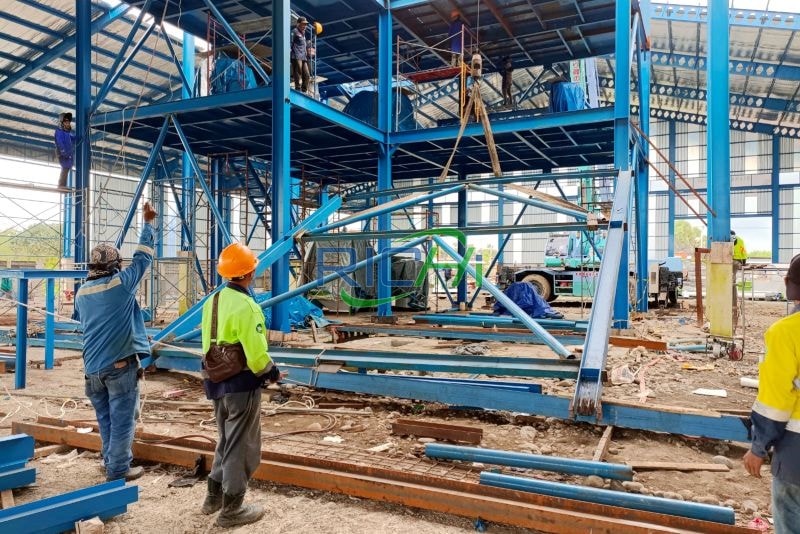
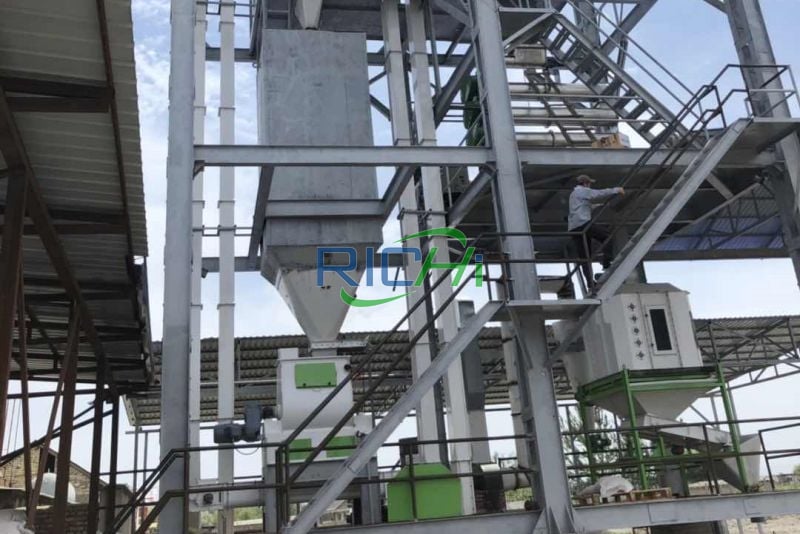
We have constructed a state of art infrastructure unit at our end over a large area of land that is equipped with all the useful modern hen feed making machines, which helped to achieve the firm’s targets. Further, our high patron-centric approach has helped us in gaining a huge client base across the global.
Moreover, to satisfy our customers in an efficient manner, we are manufacturing the offered hen feed machines in various types to choose from. (Find RICHI on YouTube)
hen feed making machine price
The following are the prices of commonly used stand-alone laying hen food making machine:
01 Single hen feed machine price
- Hen feed grinder machine cost: 5300-35000 USD
- Hen feed Mixer machine cost: 2800-36500 USD
- Hen feed pellet making machine cost: 7000-100000 USD
- pellet Cooler machine cost: 4000-20000 USD
- Vibrating screen cost: 2000-10000 USD
- Hen feed Packing machine cost: 5000-10000 USD
02 Price of complete hen feed making machine system
The price of a complete set of 1-100t/h laying hen feed production machine is usually 10,000-3,000,000 USD. Depending on the customer’s production scale, the type of process used, the configured silo system and other factors, the configuration of the complete set of laying hen chicken feed mill plant is quite different.
If you are interested in laying hen feed processing, contact us and we will customize your laying hen animal feed production line according to your needs, carry out scientific equipment configuration for you, and provide you with a reasonable hen feed machine quotation.
hen feed making machine projects
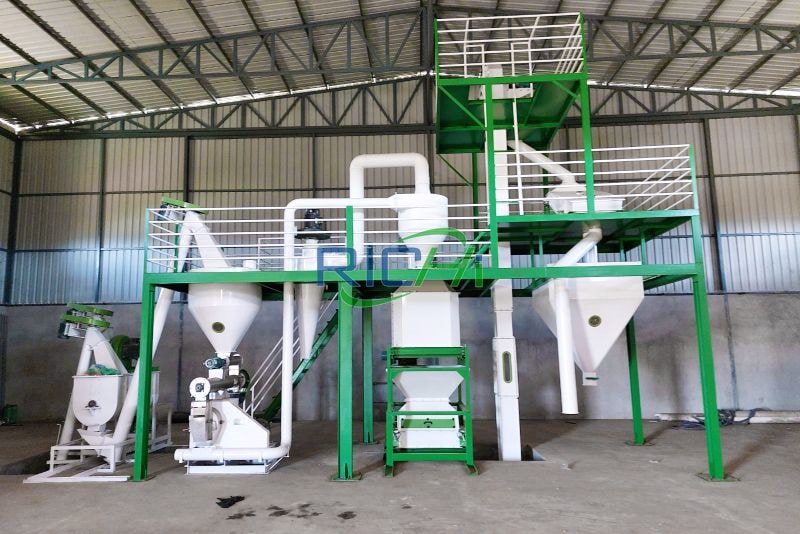
1-2T/H hen feed making machine in Nigeria
- Date: June 30, 2020
- Feed type: laying hen feed
- hen feed machine cost: 25,000-29,000 USD
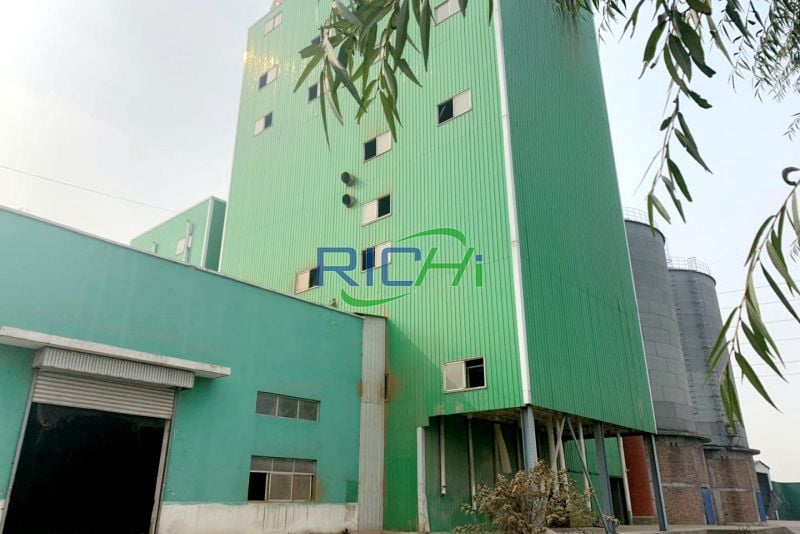
15-20T/H hen feed making machine in Vietnam
- Date: December 2020
- Feed type: hen & pig feed
- hen feed machine cost: 500,000 USD
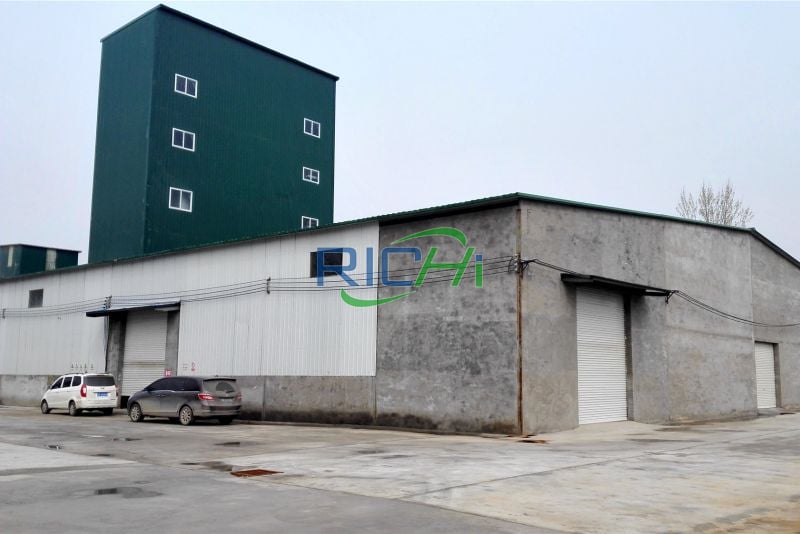
5-7 t/h hen feed making machine in Egypt
- date: 2022.06.09
- Feed type: chicken pellet feed
- hen feed machine cost: 97160 USD
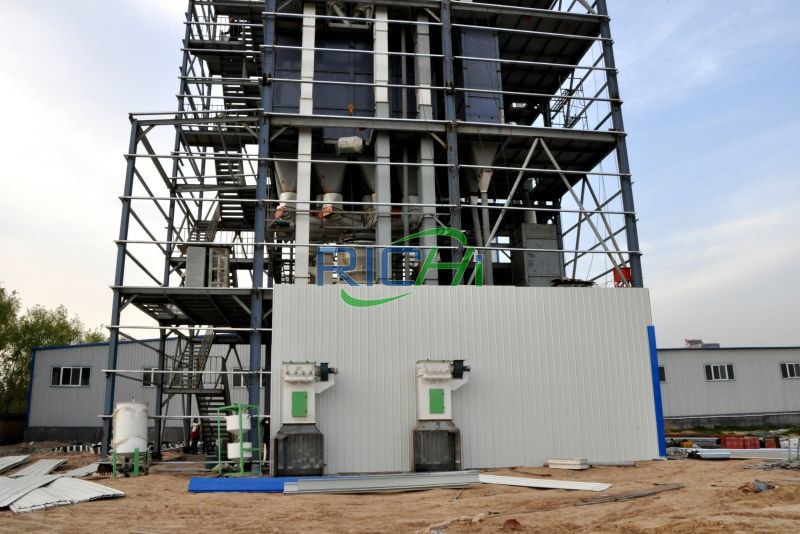
10T/H hen feed making machine in the Philippines
- Project date: 2018.09.13
- Feed type: pig & chicken feed
- hen feed machine price: 460,000 USD
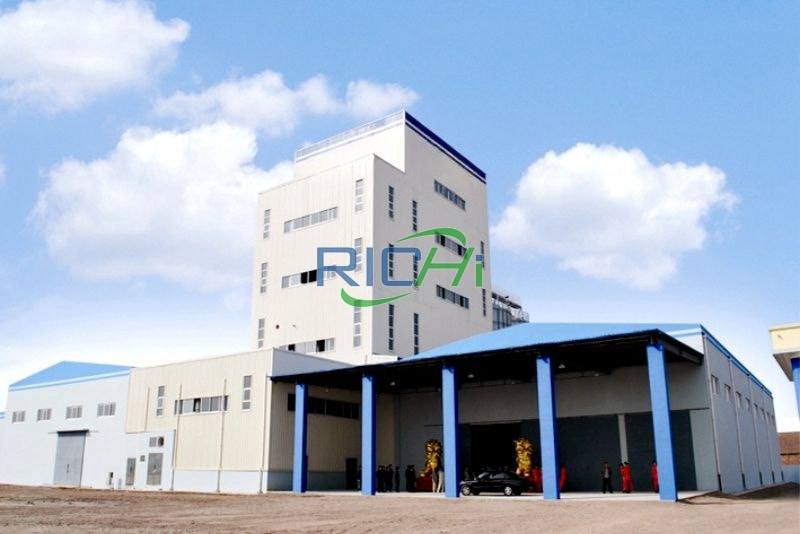
6-10T/H layer feed making machine in Algeria
- Date: Sep 21th, 2015
- Feed type: hen & broiler feed
- hen food machine cost:80,000-400,000 USD
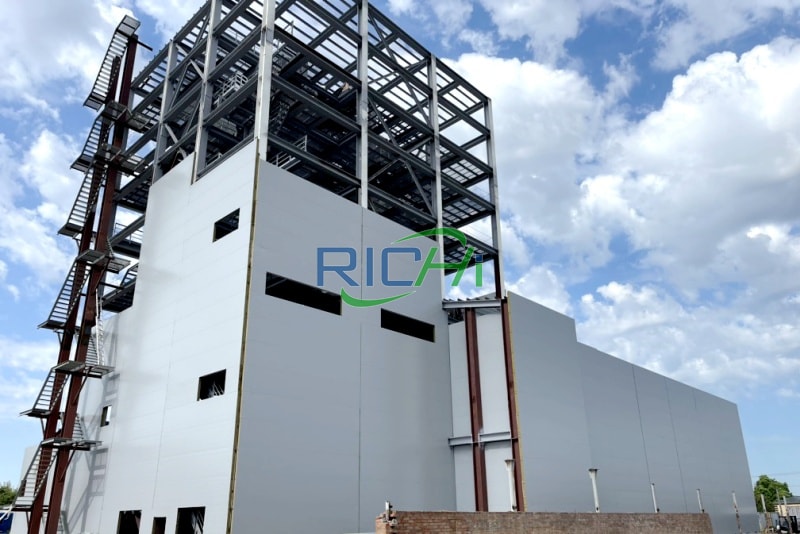
10-15T/H layer feed making machine in Uzbekistan
- Date: July 6th, 2019
- Feed type: layer & broiler feed
- hen food machine cost: 150,000-400,000 USD
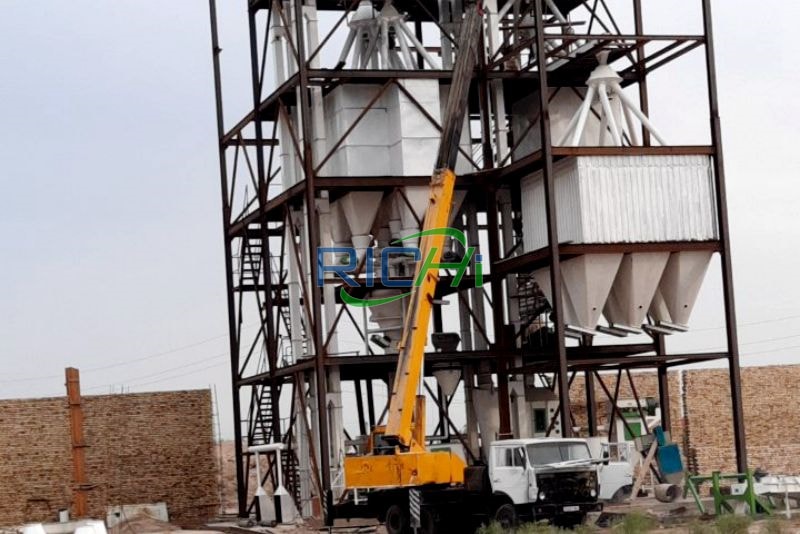
5T/H layer feed making machine In Peru
- Date: February 2021
- Feed type: chicken pellet & mash
- hen food machine cost: 220,000-250,000 USD
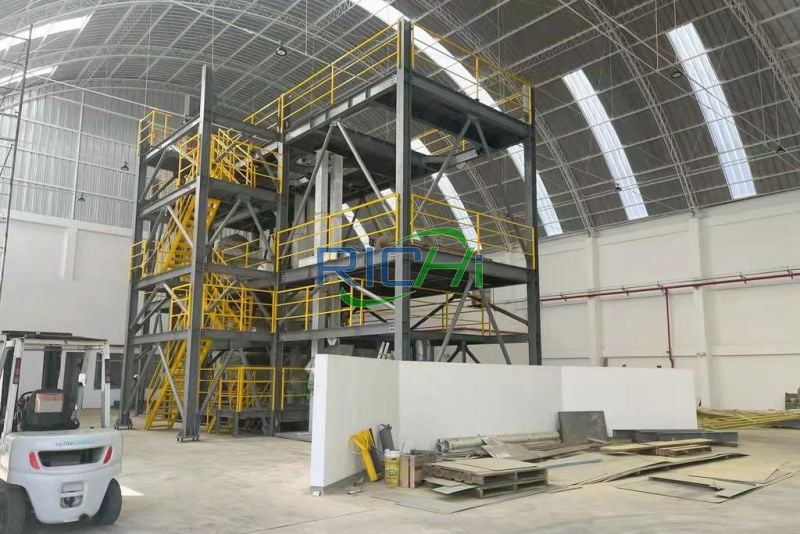
3-5T/H layer feed making machine In Malaysia
- Date: October 29, 2021
- Feed type: layer feed powder
- hen food machine cost: 60,000-65,000 USD
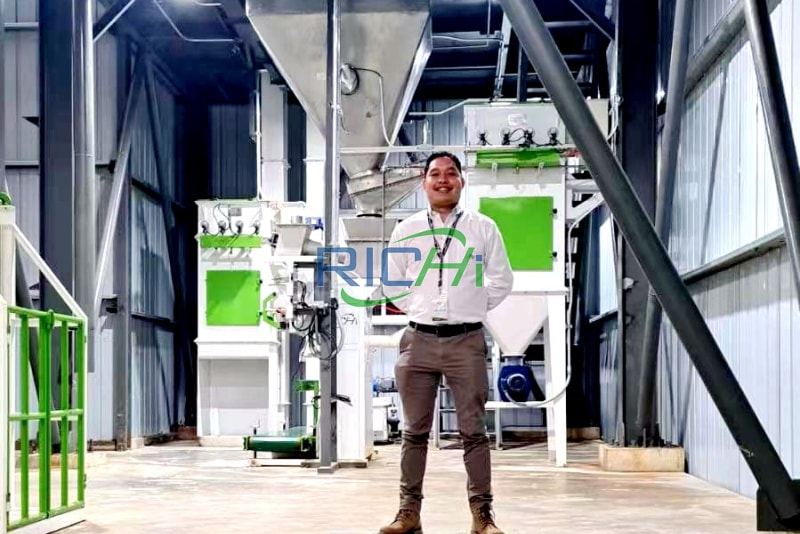
5 T/H layer feed machine In El Salvador
- date: 2022. 09.13
- Feed type: layer premix
- hen feed machine cost: 480,000 USD
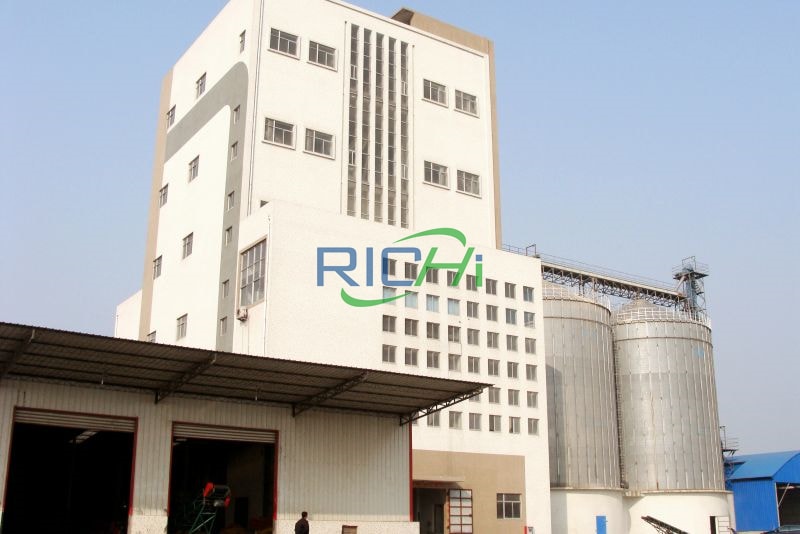
10 T/H layer feed machine In Thailand
- date: 2021. 07. 22
- Feed type: hen premix
- hen feed machine cost: 120,000 USD
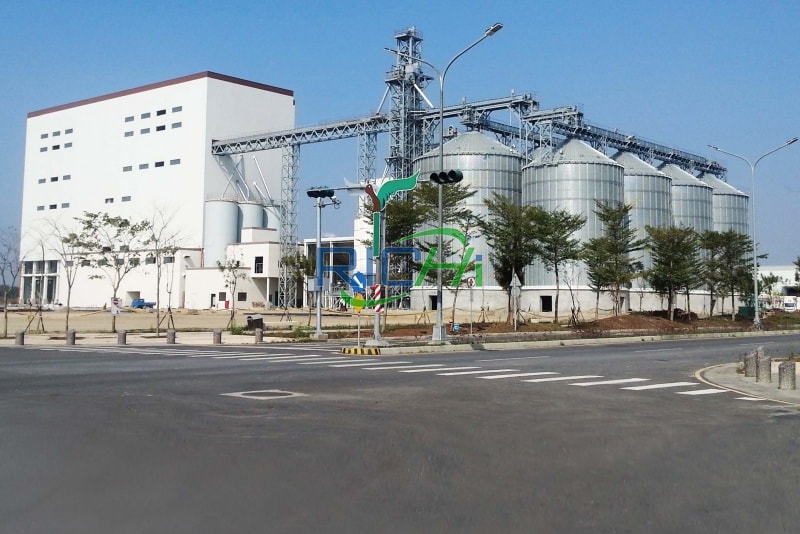
50T/H layer feed machine in russia
- Date: June 2019
- Feed type: hen & ruminant feed
- hen feed machine cost: 960,000USD
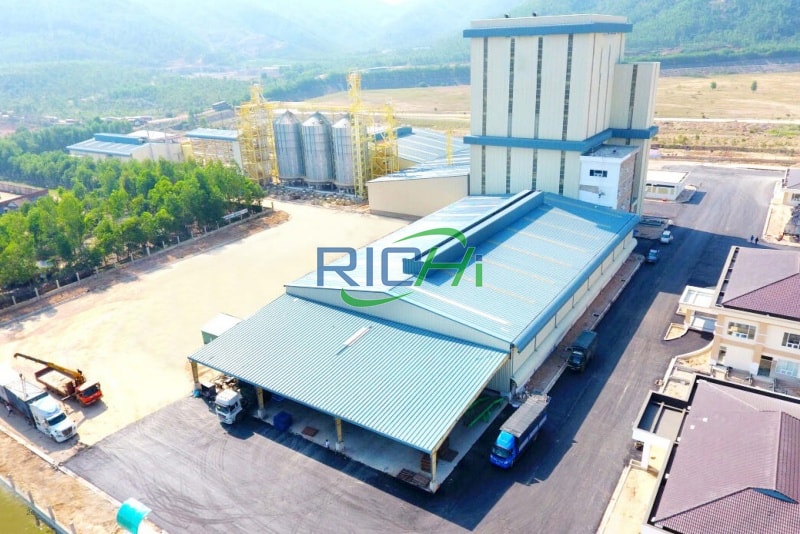
30T/H layer feed machine in Kazakhstan
- Date: December 2018
- Feed type: hen & stock feed
- hen feed machine cost: 1,250,000 USD
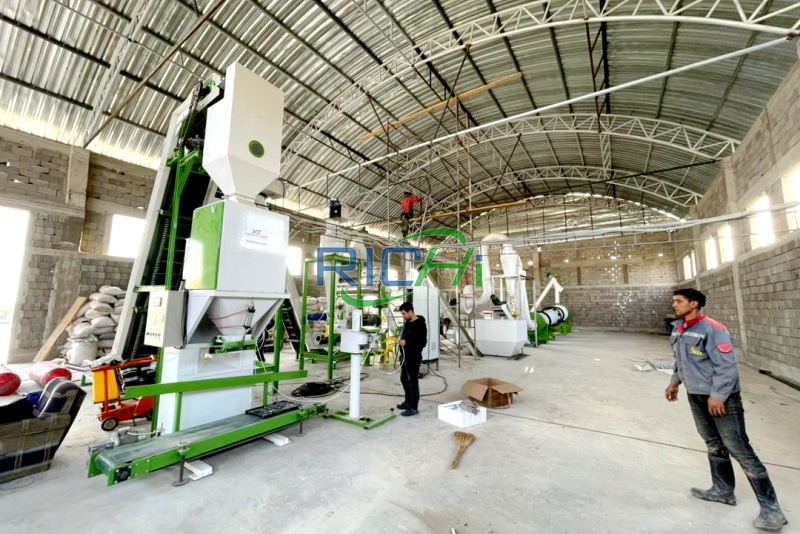
5 t/h hen feed making machine in Argentina
- Project date: 2021.10.11
- Feed type: chicken & cow feed
- hen feed machine cost: 184500USD
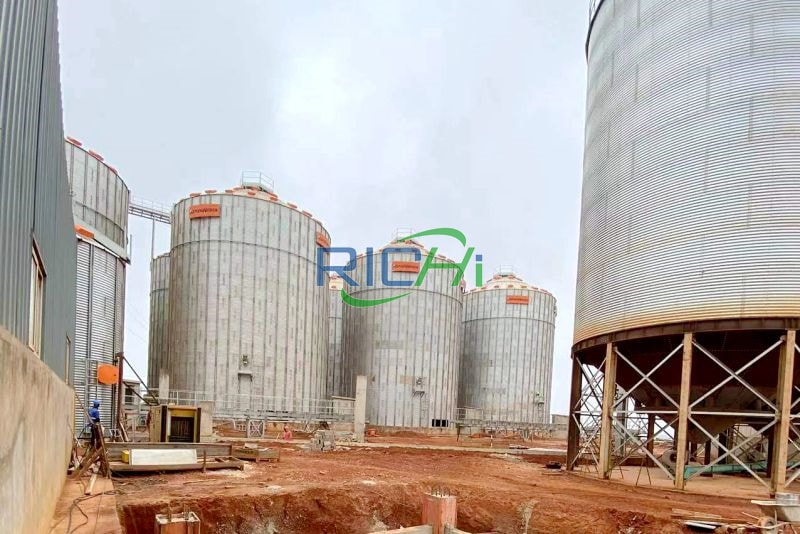
5-10 t/h hen feed making machine in Ethiopia
- Project date: 2022.10.14
- Feed type: hen & cattle & goat
- hen feed machine cost: 131820 USD
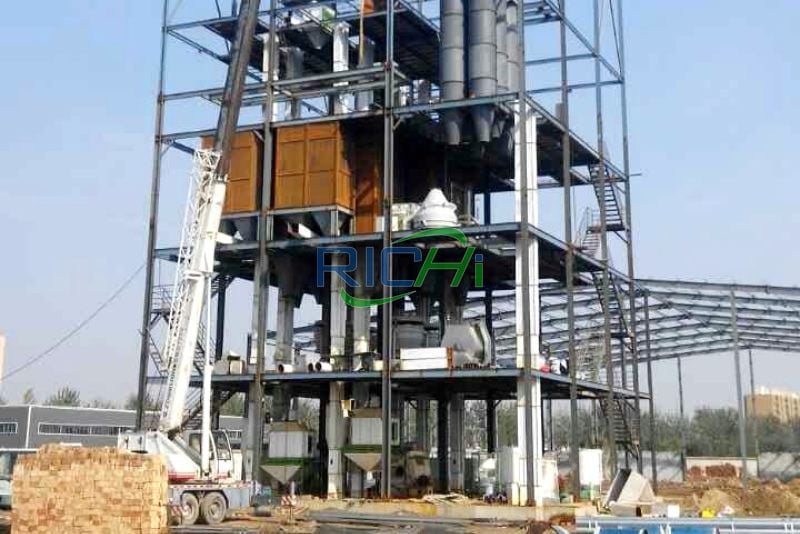
15 T/H hen feed making machine In Afghanistan
- Project date: 2022.06.30
- Feed type: Hen & aqua feed
- hen feed machine cost: 159070 USD
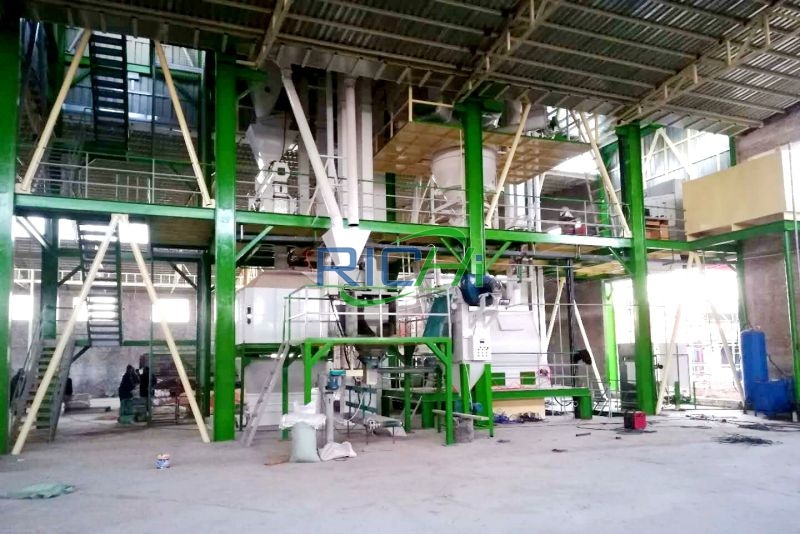
20T/H hen food making machine in united states
- Project date: 2019.05.10
- Feed type: chicken & cattle feed
- hen feed machine cost: 550000 USD
hen feed making machine Videos
hen feed making machine Configuration with different scale
Taking the 5t/h and 20t/h laying hen feed production lines as examples, the following lists the configuration list of the main laying hen feed mill equipment:
5-6 t/h hen feed making machine system
Whole system Price: 70000-250000 USD
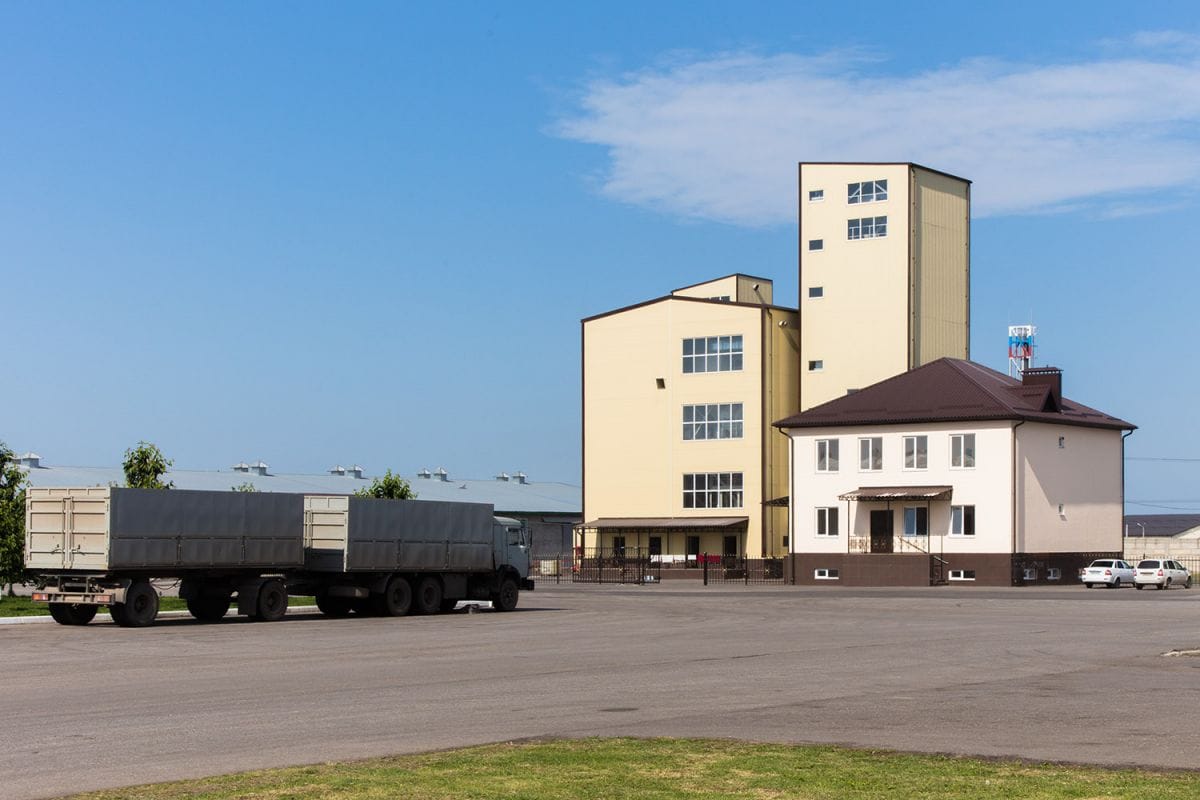
| Drum type precleaner | SCY63 | 1 |
| hen feed Hammer mill | SFSP66*60 | 1 |
| Rotary distributor | TFPX6, TFPX4 | 2 |
| Permanent magnetic sleeve | TCXT20 | 1 |
| Powder precleaner | SCQZ60*50*100 | 1 |
| Batching scale | PLC0.5A | 1 |
| Small material checking balance | PLC0.1B | 1 |
| Single-shaft mixer | SLHJ1A | 1 |
| Scraper conveyor | TGSU20 (about 5m) | 1 |
| Automatic Packing machine | DCS-50 | 1 |
| Sewing machine+conveyor | / | 1 |
20 t/h hen feed making machine system
whole system Cost: 400000-450000 USD
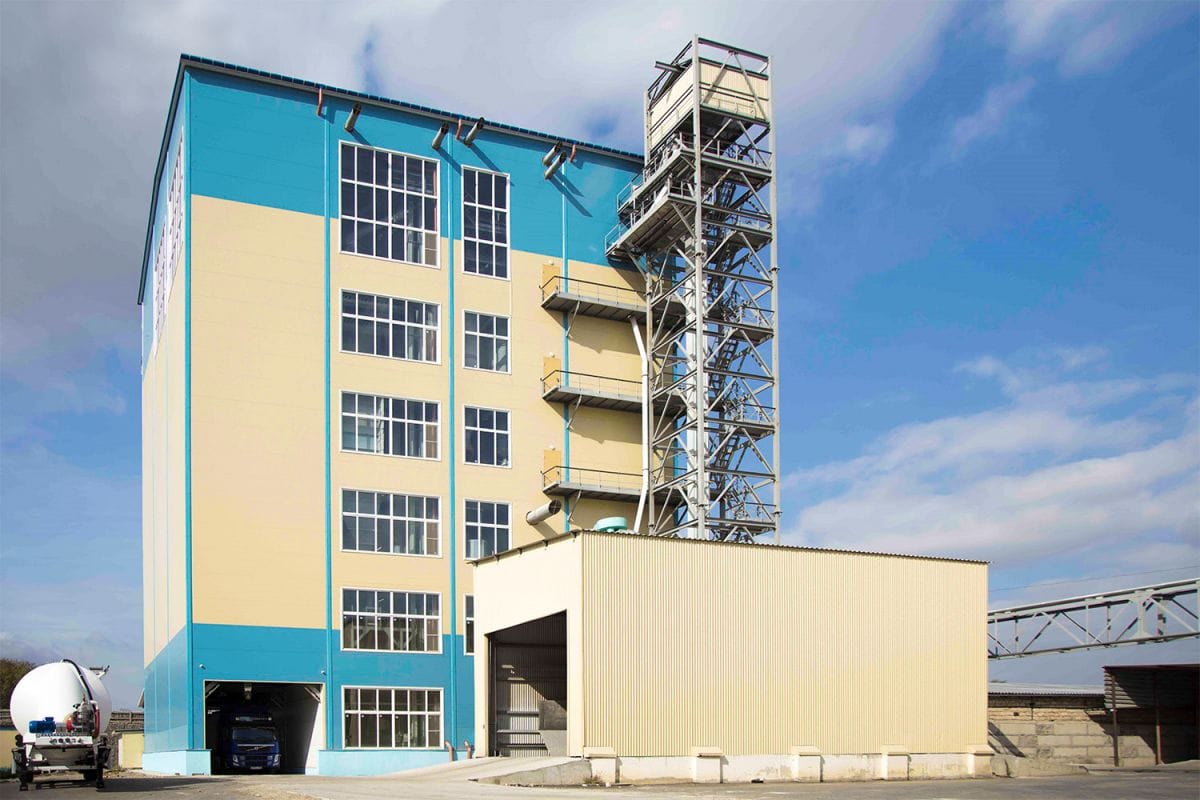
| Drum type precleaner | SCY80 | 1 |
| Permanent magnetic sleeve | TCXT25 | 1 |
| Powder precleaner | SCQZ60*50*100 | 1 |
| hen feed Hammer mill | SFSP66*80 | 2 |
| Rotary distributor | TFPX8 | 2 |
| Batching scale | PLC1.0A | 2 |
| Premix adding hopper | / | 2 |
| Small material checking balance | PLC0.15B | 2 |
| Mixing machine | SLHJ2.0A | 2 |
| Automatic Packing machine | DCS-50 | 1 |
| Sewing machine&belt conveyor | / | 1 |
A layer feed plant includes but is not limited to the above configurations. The surrounding environment, physical and chemical properties of raw materials, discharging requirements, etc. will all affect the selection of hen feed manufacturing machine.
Moreover, there are many models to choose from for the hen feed making machine configuration of each processing link, so basically the detailed configuration of the poultry chicken layer feed production line will be different.
If you also want to configure a hen feed production line that suits your needs, contact us to customize a plan and get a detailed layer feed machine quotation!
Advantages of hen feed making machine system
The hen feed production line is a new production process specially designed for livestock and poultry feed. It can be customized according to the needs of raw materials and formulas. Its advantages are:
- High efficiency, energy saving and no pollution.
The hen feed making machine has a high degree of automation, low operating costs, high feed forming rate, energy saving, large output, low pollution, and easy maintenance. The produced hen feed has uniform particle size and good particle shape, and meets the feed processing standards of various countries. - High degree of automation.
In addition to starting up, stopping, feeding, daily maintenance, etc., the hen feed making machine system only requires a little manual operation. The advantages of this device are: high working efficiency, low operating cost, large output, high economic benefits, and the finished feed particles are uniform in size and good in shape, meeting the needs of various types of livestock breeding. - Simple and easy to operate.
When designing the process flow, various levels of feed equipment are reasonably matched and strictly spatially arranged, so that they have the advantages of small floor space, high investment economic benefits, and good feed quality, low dust output and other advantages. It is also equipped with an advanced electronic control operating system to ensure smooth discharging, reliable operation and simple operation throughout the entire process. - Technical humanization.
Our company has a series of hen feed making machine systems with complete types and models. We can select the corresponding types of equipment according to the different technical requirements of customers to give full play to their advantages.
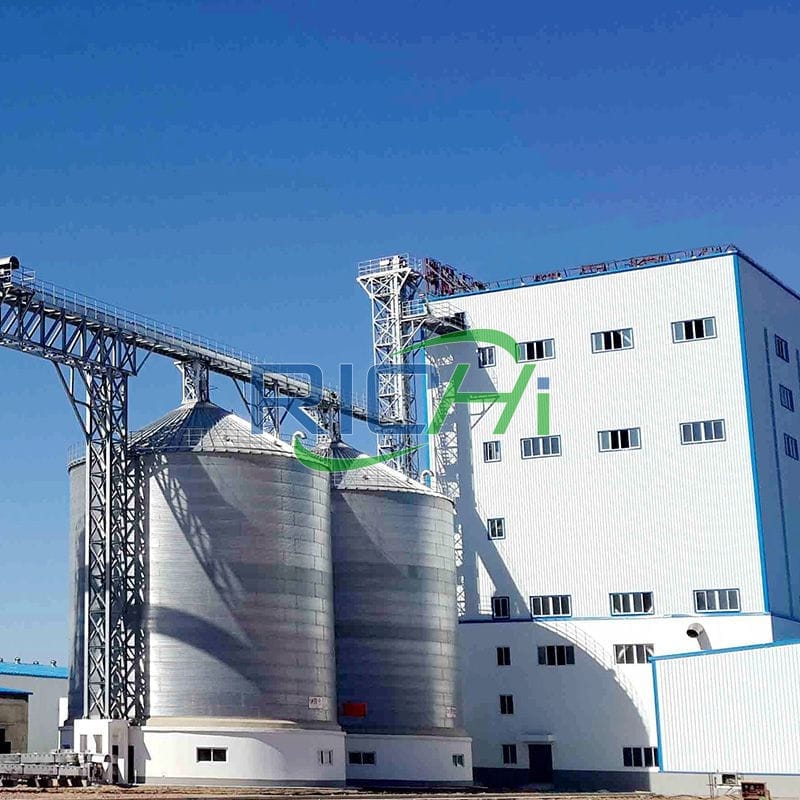
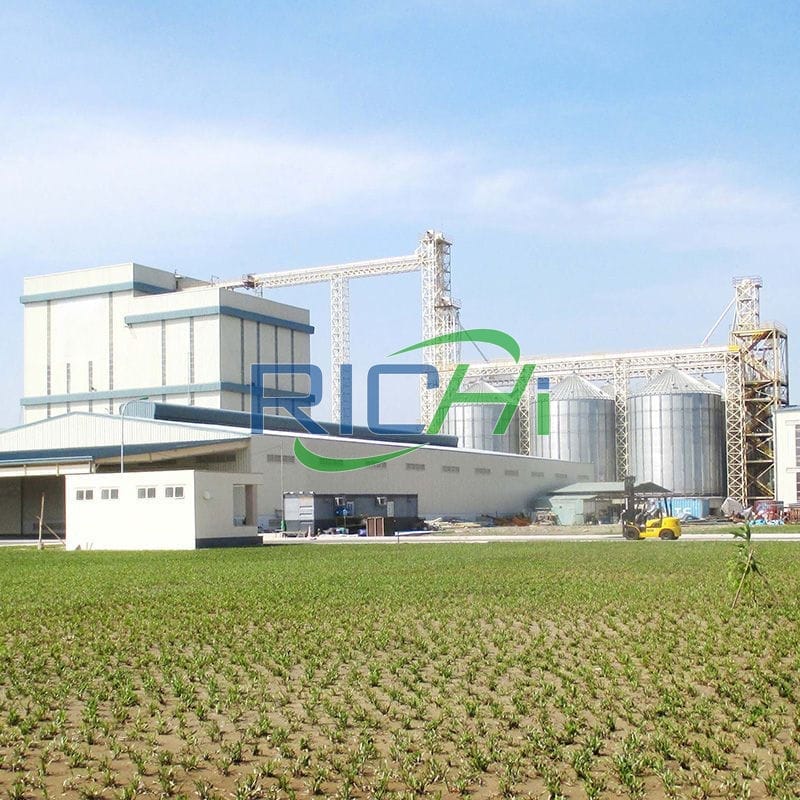
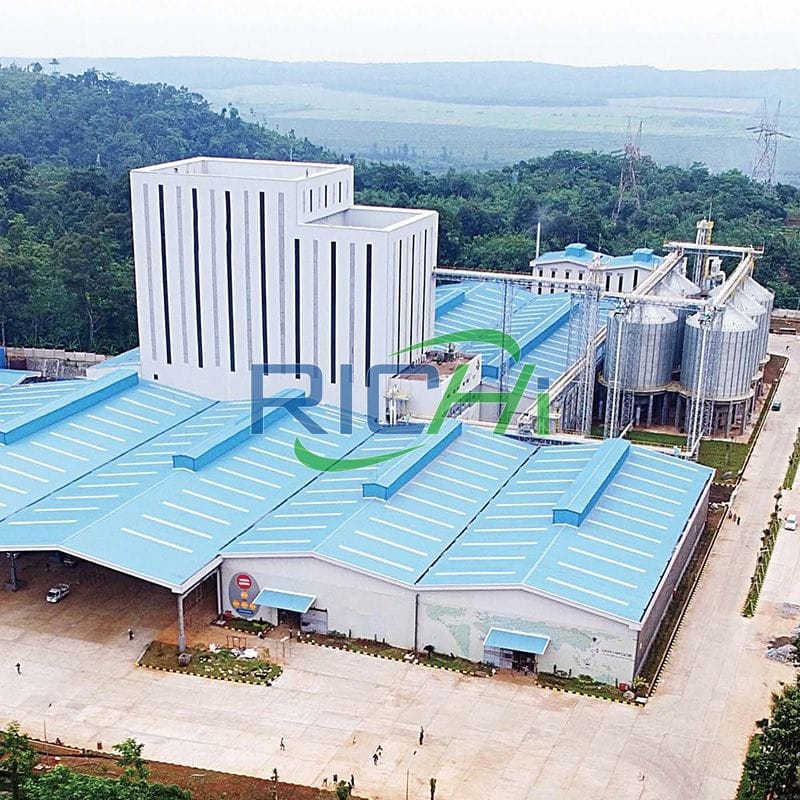
RICHI is a hen feed making machine enterprise with reasonable structure, low investment, stable performance and large production capacity, which can be customized according to the special needs of users.
How to choose hen feed making machine?
When selecting animal feed mill equipment for hen, the following factors should be considered:
- Production scale:
Determine the production capacity of hen feed machine according to the company’s production needs to avoid over-investment or insufficient production capacity. - Equipment quality and stability:
Choose hen food making machine from well-known brands to ensure the stability and long-term operation of the production line. - Equipment functions and performance:
Choose appropriate layer feed making machine according to product requirements, such as specific mixing capabilities or feed pellet machine specifications. - Post-sales service and technical support:
Choose a supplier with complete after-sales service and technical support to solve layer feed machine faults and maintenance problems in a timely manner.
The hen feed making machine system is an advanced laying hen feed processing technology with wide application prospects. Its advantages such as high applicability, performance optimization, environmental protection, energy saving and production efficiency improvement make it play an important role in the feed processing industry.
When selecting hen poultry feed mill equipment, customers should comprehensively consider factors such as production scale, equipment quality, functional performance, and after-sales service to ensure the selection of appropriate hen feed machine.
FAQs of hen feed making machine

Can you provide processing technology for matured powdered feed for layer hens?
RICHI can provide processing technology for mature powdered feed for laying hen poultry feed production lines. The emergence of matured powder has enabled powdered feed to achieve a qualitative leap. And it has been widely used internationally.
(According to the needs of different customers, we can also configure traditional laying hen feed processing technology and laying hen feed pellet processing technology)
The aging process of raw dry powdered feed basically consists of aging, conditioning, heat preservation, homogenization, drying, cooling, mixing and other processes. The processing technology of matured powder feed is simple to operate and the quality is easy to control.
Conditioning or extrusion expansion and ripening can significantly sterilize and meet the requirements for safe production of laying hens. Commonly used curing processes include the following:
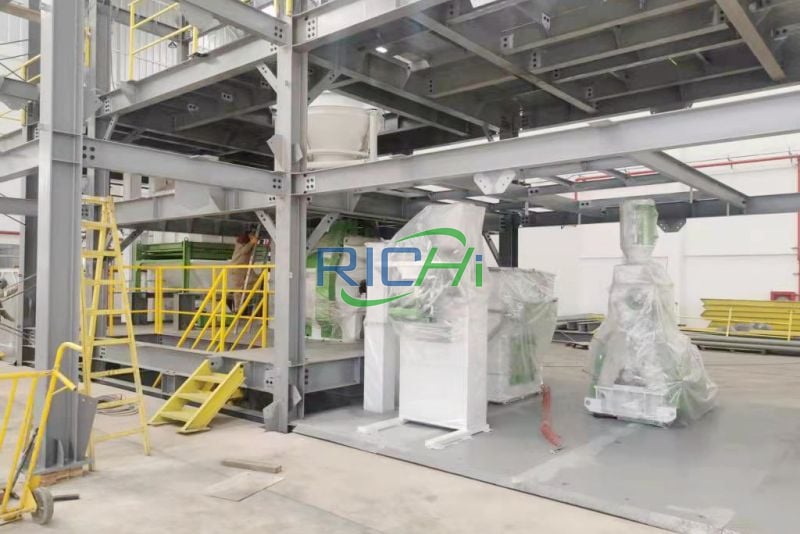
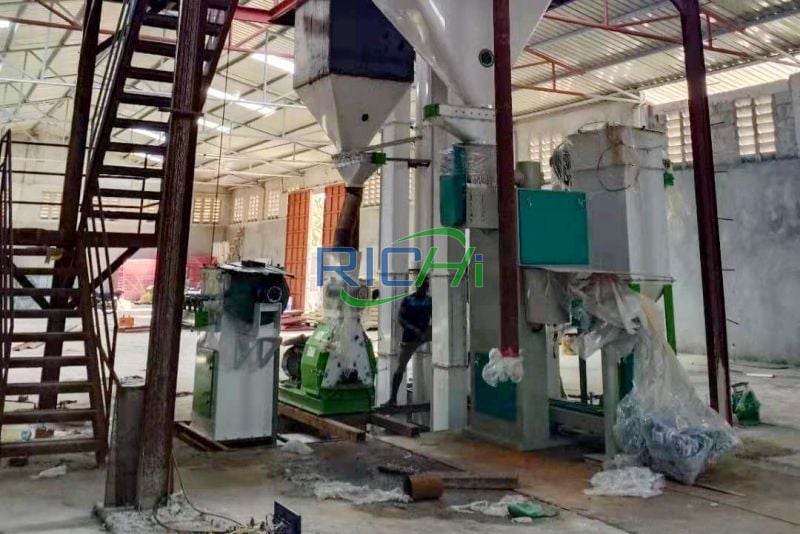
So, how to make layer mash for chickens?Process type of mature powdered feed:
(1)Puffed powder aging process
This process is to process the feed under high temperature and high pressure to obtain a finished product with high maturity. The degree of starch gelatinization can be as high as 80% or more. It is also low in bacteria and rich in nutrients. It is very in line with the breeding requirements of laying hens and can improve the feed utilization efficiency.
About 10%, the breeding effect is greatly improved, reaching more than 30%. Although this process is better than other aging processes, it has high production costs, high energy consumption and high operating skill requirements.
(2)Powder aging process of high moisture aging mixer
This process is a tempering and homogenizing process, which is simple and convenient to operate. High temperature and high moisture are used to inactivate pathogens, causing them to die due to protein coagulation. The moisture content in the feed is high, which can be as high as more than 20%, and needs to be processed through a drying process.
(3)Optimized process for tempering and homogeneous powder aging
This process strengthens the homogenization function, further improves the safety and digestibility of laying hen feed, and has the advantages of simple operation and low energy consumption.
Mature powdered feed has the advantages of convenient operation and management, simple process, safety, full price, good retention of heat-sensitive components, energy saving and environmental protection, etc. It effectively overcomes the shortcomings of raw powdered feed and enables powdered feed to achieve a qualitative leap and gradually reveal its It is a development trend to replace the use of pellet feed.
It is widely produced and used in the feed industry around the world. Currently, there are hundreds of mature powder feed production plants, making it an ideal feed choice for laying hens.
The powdery feed aging process can fully meet the requirements of laying hens. Among them, the aging process of extrusion and puffing of raw materials or finished products is the best, and the quality of the finished products is the best, but it also has certain disadvantages such as high energy consumption. In terms of economic performance, it is better to emphasize the homogenization process.
However, there is still a big gap between our country and advanced foreign countries in the laying hen feed maturation processing technology.
It is necessary to continuously adjust the process parameters of the powder curing process, combined with the breeding effect of powdery ripening polymeric powder feeding for laying hens, and gradually bring the mature technology and production equipment of powdery feed with good breeding effect into the scope of animal husbandry breeding. Promotion and application within the country will surely bring huge social and economic benefits.

Characteristics of laying hen feed processed by laying hen feed making machine
Layer feed processed by RICHI hen feed machine has the following characteristics:
- Complete compound;
- Safety;
- Retention of heat-sensitive components;
- Energy saving;
- Easy to operate and manage.
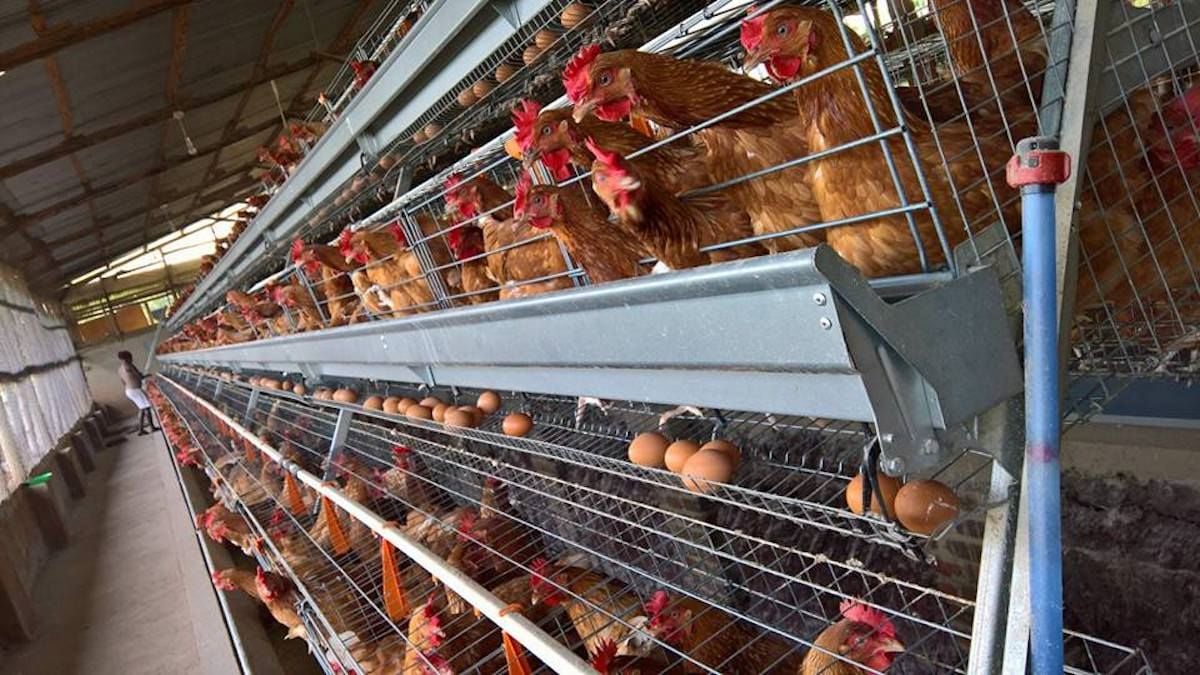
(1) Complete compound
During the processing of mature powdered feed, starch and protein are crushed under natural conditions and the surface of the hydrothermally treated powder is rough because it has not been extruded. After hydrothermal treatment, the starch is gelatinized and the protein is denatured, and the surface of the powder becomes rough. Has a certain degree of stickiness.
During the mixing process, larger starch and protein powder particles can absorb trace elements and vitamin particles with smaller particle sizes and become a multi-grain matured powdered feed, making the matured powdered feed have better overall properties. Valence.
Ripened powdered feed can replace some pellet feed products. Moreover, the matured powdered feed has better fluidity and reduces the dust generated during the subsequent processing of the material and the generation of automatic classification.
(2) Security
Microorganisms have poor resistance to moisture and heat. Under the action of steam, microorganisms can absorb high-temperature water in the surrounding medium, which promotes the coagulation of microbial cell proteins and accelerates the death of microorganisms. Salmonella and other pathogenic bacteria can be completely inactivated after the ripe powdered feed is treated with water and heat.
Harmful factors such as protease inhibitors are fully destroyed and inactivated, while starch is better gelatinized and protein is effectively denatured, making the mature powdered feed safer and more absorbable than unripened powder.
(3) Low loss rate of heat-sensitive components
During granulation and conditioning, heat-sensitive components must go through the process of water, heat treatment and extrusion. The loss of heat-sensitive components such as vitamins A, D3, K3 and enzyme preparations reaches 30% to 90%.
In order to meet the breeding requirements, heat-sensitive components must be Most of the sensitive components must be over-added or post-sprayed to meet the feeding requirements. The fastness of the post-sprayed heat-sensitive components to the surface is still insufficient. The heat-sensitive components of the mature powdered feed are added after water and heat treatment.
There is no need to go through the process of water and heat treatment. There is no loss of the heat-sensitive components and there is no need to add excess amounts. The accuracy of the content of heat-sensitive components in matured powdered feed is much better than that of matured pellet feed.
(4) Energy saving
Ripened powdered feed does not go through the high energy consumption pelleting section. Compared with short-term conditioning and pelleting, it can save energy consumption by 10% to 20%. Compared with long-term conditioning and pelleting, it can save energy consumption. 15%~30%. It is an energy-saving and emission-reduction process.
The processing technology of mature powdered feed can reduce the cost of feed production (including not adding excessive amounts of heat-sensitive components) by about 10% to 15%. Improved the economic benefits of feed processing plants and farms.
(5) Convenient operation and management
Ripened powdered feed is a pelleting section that has not undergone high operation and management requirements. The operation and management of matured powdered feed are easier, the quality control of matured powdered feed is easier, and the quality is easy to be guaranteed. The processing of mature powdered feed has lower requirements on operators.
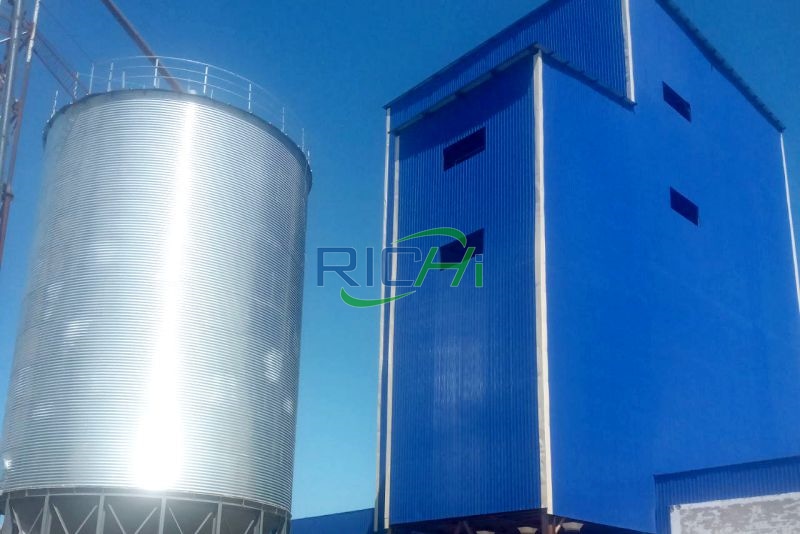
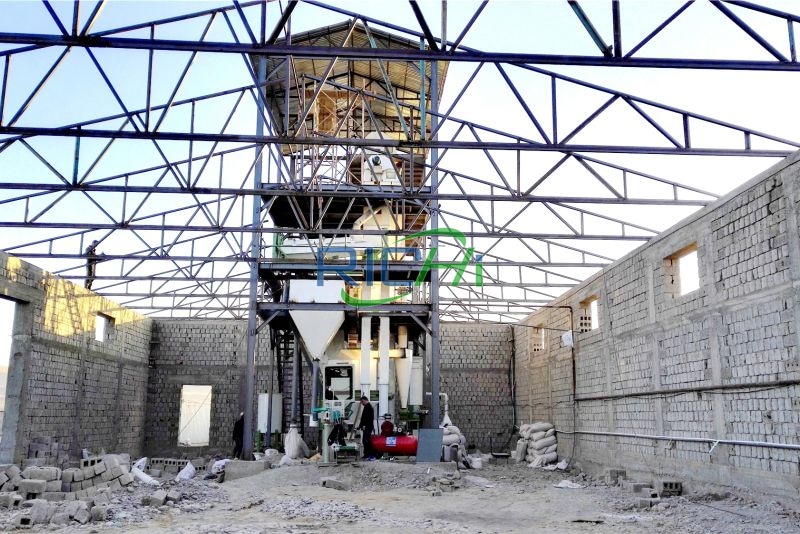
(6) Safely matured powdered feed production process
The aging processing technology is the key to ensuring the quality of matured powdered feed. The production process of safe matured powdered feed is divided into intermittent and continuous.
The main process consists of aging and conditioning (water, heat treatment), heat preservation and homogenization, drying, cooling, mixing (adding trace components) and other processes. The process of aging powdered feed can add a process to the existing layer feed mill. This process is particularly suitable for laying hen feed processing. At present, this process is basically accepted by users around the world.
This process is suitable for laying hen feed processing. The relevant process parameters: curing temperature, curing time and material moisture should be determined according to the characteristics of your own equipment. The relevant process parameters are determined based on the curing effect of the material.
Producing safe feed not only requires reasonable technology, but also requires equipment to meet hygienic requirements. All laying hen feed equipment must have low material accumulation and low pollution, ensuring that the feed is first in, first out in the equipment, difficult to accumulate material, and easy to clean.
In the laying hen feed processing technology of many chicken laying hen feed factories, many customers have formulated the laying hen feed processing technology based on food safety standards, that is, strengthening the feed maturation treatment, not lifting the process after mixing, adding appropriate amounts of oil and selecting high-quality and low-quality conveying equipment, residual technologies such as self-cleaning conveyors.

What is layer feed made of?
The characteristics and composition of layer hen feed raw materials have a great impact on processing quality and application effects, and the composition of raw materials in feed depends on its nutritional level, supply and cost.
The nutritional requirements of laying hens change little throughout the laying period, which determines that the raw materials used in the preparation of laying hen feed are relatively simple. There is little change in the metabolic energy level of laying hens’ feed;
Reasonable feeding can make laying hens grow well, enhance immunity, and increase egg production rate. Therefore, it is necessary to understand the nutritional standards of laying hen feed.
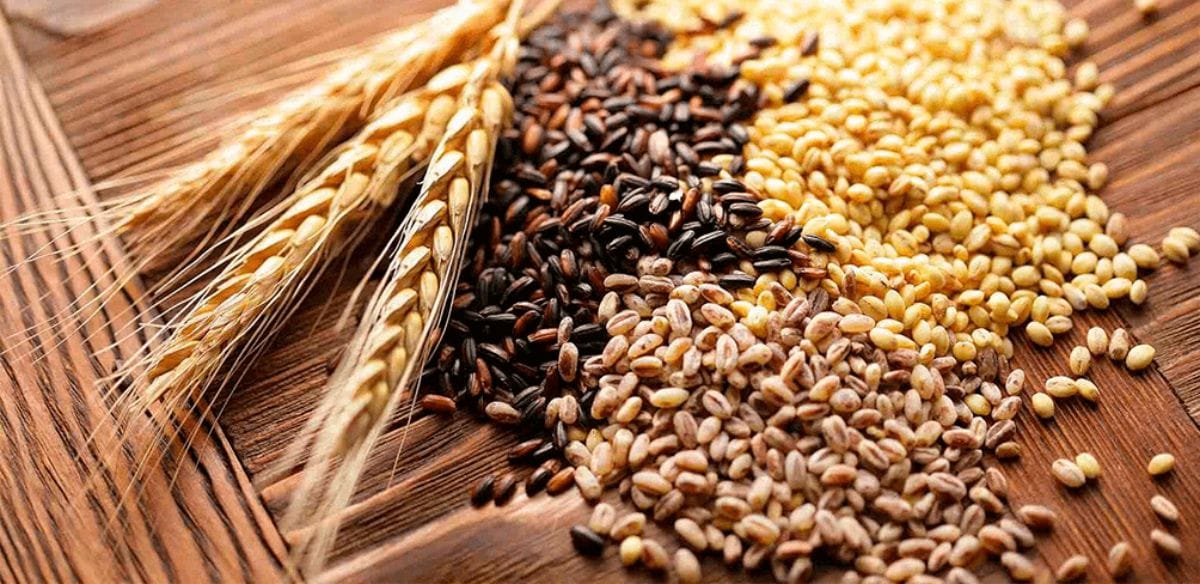
According to national standards, the nutritional needs of laying hens include crude protein, crude fat, crude fiber, crude ash, calcium, phosphorus, chlorine, sodium, sulfur and other nutrients, which must be present in appropriate proportions in the feed.
Specifically, the nutrient content per kilogram of dry feed required by laying hens is as follows:
- – Crude protein: 15% – 18%
- – Crude fat: 2.5% – 4.5%
- – Crude fiber: 5% – 7%
- – Coarse ash content: 10% – 14%
- – Calcium: 3.3g – 4.5g
- – Phosphorus: 4g – 5.5g
- – Chlorine: 0.3% – 0.4%
- – Sodium: 0.15% – 0.2%
- – Sulfur: 0.15% – 0.2%
The above are industry standards. In actual feeding, the hen feed ratio must be appropriately adjusted according to the growth stage, variety, environmental temperature, etc. of laying hens.

Powder, granule or granule crushing, which one is most suitable for laying hens?
There are three types of feed for laying hens: powder, pellets and crumbled feed.
- Compared with powdered feed, pellet feed increases the feed intake and weight gain of laying hens, but has no effect on egg production performance;
- Feed material type has no effect on the weight gain, uniformity and death rate of laying hens.
- Pelleted broken feed can increase the body weight, egg weight and egg production of laying hens, and can reduce the feed-to-egg ratio, but the variety has a greater impact on the production performance and other indicators of laying hens than the feed type;
- Pelleted broken feed has no effect on the egg production rate and egg weight of laying hens, but only affects the feed-to-egg ratio;
- But pellet broken feed can improve the feed intake and egg production rate of laying hens under heat stress conditions;
- The production performance of laying hens fed powdered feed is better than that of pellets and pellet crushed feed;
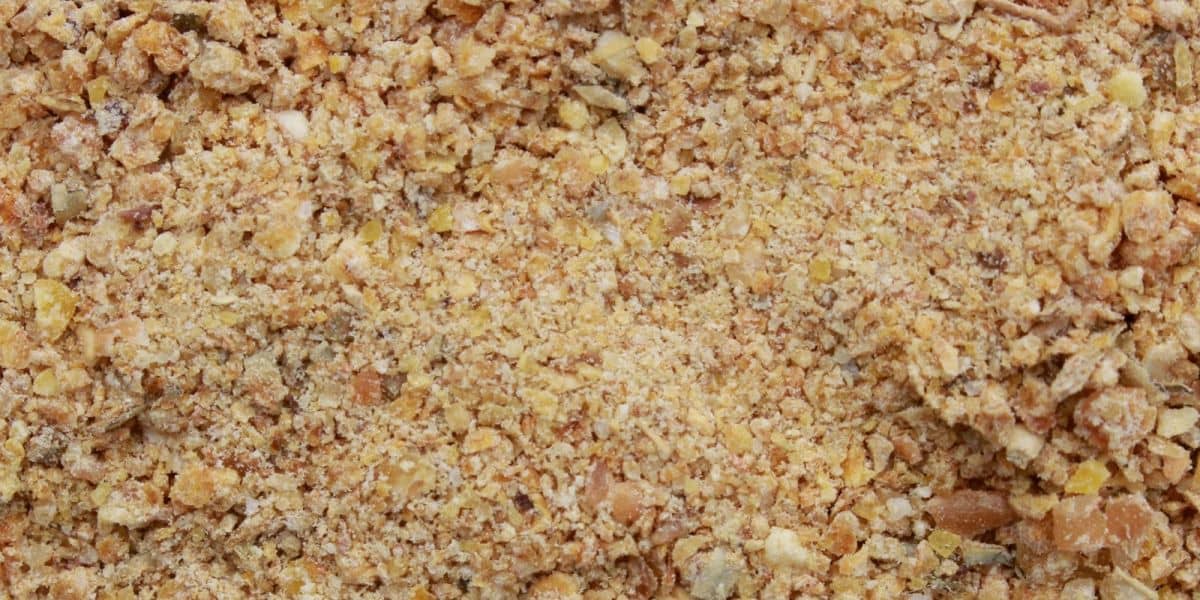
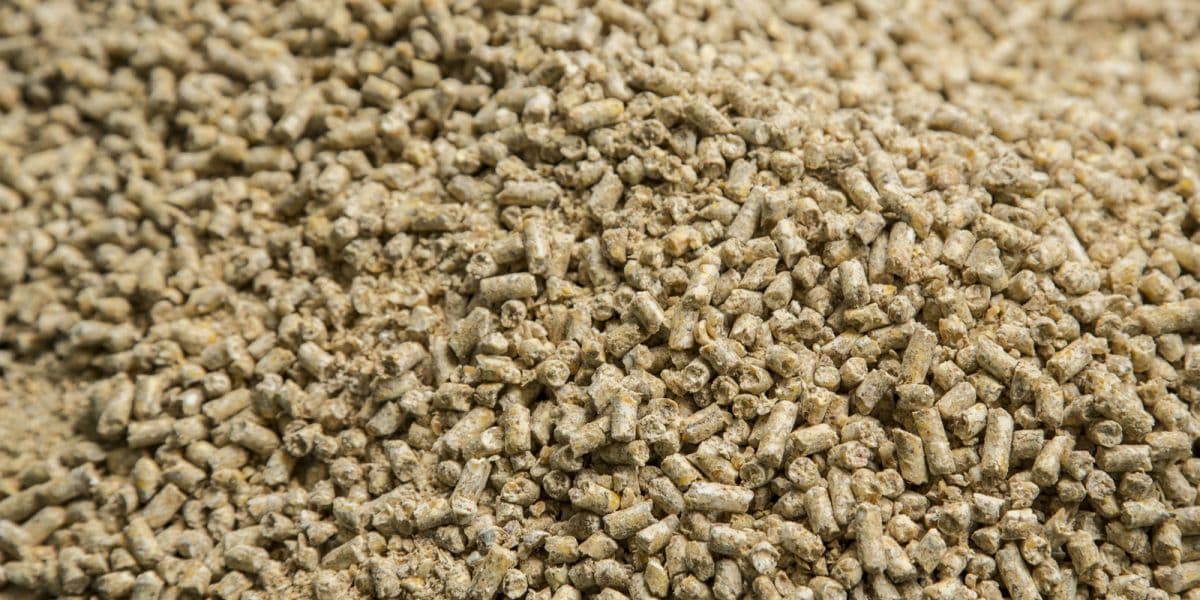
The impact of feed type on laying hens is related to its breed and egg-laying stage. Some laying hens have better production performance when fed powdered feed, and can significantly reduce the pecking behavior of laying hens, while some laying hens is advisable to feed pellet feed.
lAlthough feeding pellet crushed feed can increase the feed intake, egg weight and qualified egg rate of laying hens, due to the high production cost of pellet crushed feed, its net income is lower than that of powdered feed, and the color of egg yolk and egg shell is reduced. Affect egg quality.
There is no consistent conclusion on the impact of feed type on the hen production performance, intestinal function and morphological structure, intestinal microorganisms, etc. of laying hens.
From the comprehensive consideration of the production performance, hen feed making machine investment, processing cost, economic benefits, etc. of laying hens, the feed type of laying hens Powdered feed is preferred, and at present, powdered feed is mainly used in actual breeding and production of laying hens.
Laying hens are fed less pellet feed, and large grain powder feed is used, so that the laying hens have a longer feeding time, consume too much energy, and prevent the laying hens from accumulating too much fat in the body, otherwise it will affect the chicken’s health. The growth and development of bones and internal organs will reduce the function of the reproductive system and affect the egg production rate and egg quality.
However, the residence time of pellet feed in the chicken stomach is shorter, and the feed intake increases, which can easily cause the laying hens to become overweight and reduce the egg production rate. In addition, the processing cost of pellet materials is high, and it is only used in the chick stage and is rarely used in other stages.

How to design the feed formula for laying hens?
The feed formula for laying hens is to reasonably determine the proportion of various raw materials based on the nutritional needs of laying hens, the nutritional value of the feed, the current status and price of raw materials, and other conditions. It must meet the nutritional needs of laying hens, give full play to the production performance of laying hens, and obtain products with large quantities, good quality, and low cost.
Therefore, when designing the feed formula for laying hens, it is necessary to understand the requirements of various nutrients for laying hens and the characteristics of various feed raw materials. Only on this basis can reasonable and scientific coordination be carried out. The following points should be noted in the formula design of compound and concentrated layer feed.
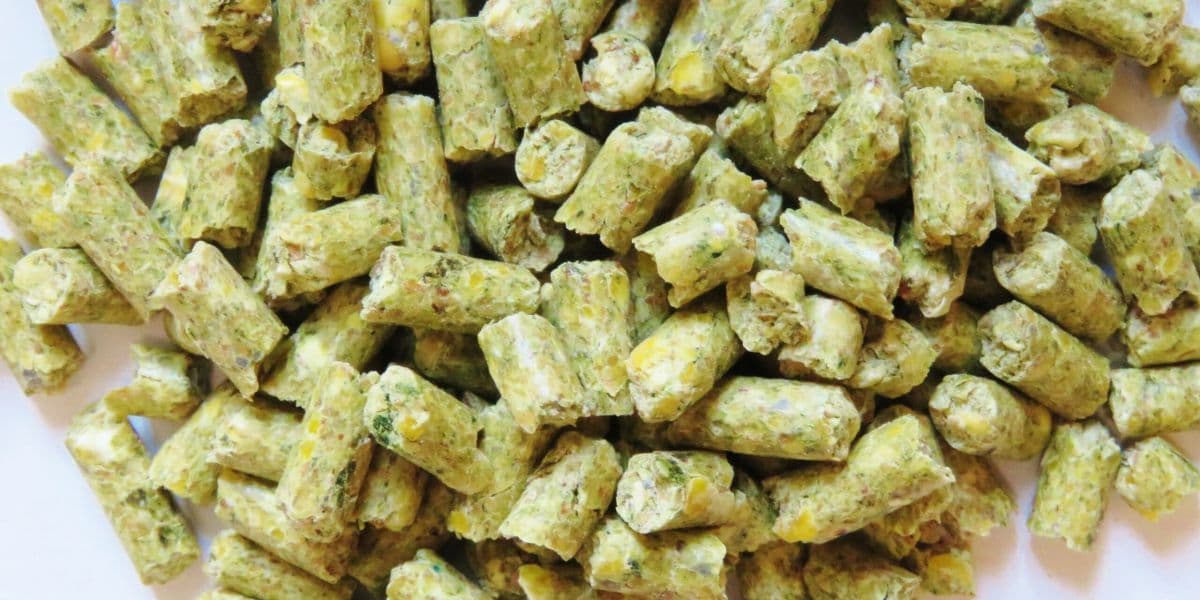
- Determine the nutritional standards for use
To design the feed formula for laying hens, you must first determine the nutritional standards to be used. Determining the product standards is the basis for designing the feed formula.
Most hen feed hen feed making machine plants adopt the standards of the country where they are located, and some adopt breeding company standards or foreign nutritional standards (such as NRC standards). Many larger hen feed mills have formulated corporate standards suitable for their own situations.
1.1 Feed nutritional standards of feed manufacturers
Generally, layer poultry feed plants adopt national standards, and larger feed mills have formulated corporate standards that suit their own circumstances.
1.1.1 Adopt national standards
- The state implements mandatory standards for concentrated feed for laying hens, broiler chickens, piglets, and growing and finishing pigs;
- Recommended standards are implemented for compound feed for laying hens, laying hens, and broiler chickens;
- There are neither national standards nor industry standards for concentrated feed for laying chicks and growing layers.
In this way, it is not easy to refer to when designing hen feed formulas. At the same time, due to the advancement of science and technology, some national standards are no longer adapted to the current actual situation.
For example, the application of phytase allows the phytate phosphorus in feed to be released and used by passive objects, reducing the amount of inorganic phosphorus and environmental pollution. The total phosphorus index in the standard is not suitable for the current situation.
At present, many countries have also put forward higher requirements for feed standards and have higher requirements for product analysis guarantee values. For example, concentrated feed must indicate the content of amino acids, major trace elements and vitamins, but national standards do not have values for these indicators. Therefore, national standards have certain limitations and should be used flexibly.
1.1.2 Adopt corporate standards
Due to the limitations of national standards and foreign nutritional standards (NRC standards) and their inoperability in actual hen feed making machine plants production, many laying hen feed companies have formulated corporate standards suitable for their own development.
When formulating enterprise standards, if there are national standards, they must be guided by the national standards, and the indicators must not be lower than the national standards. Enterprises are not allowed to formulate the “Feed Hygiene Standards” by themselves. They are mandatory standards and must be implemented in accordance with the “National Feed Hygiene Standards”.
1.2 Feed nutritional standards for laying hen farmers
Every time a breeding company launches a new breed of laying hens, a complete set of standards will be launched accordingly. Generally speaking, breeding companies consider their own interests and set relatively high feed standards. Laying hen farmers can make appropriate adjustments and establish corresponding feed nutrition standards based on actual local conditions.
- Understand the market, conduct market research, meet market demand, and establish feed formula design standards
An important trend in applied nutrition of hen feed formulation is the development from the lowest cost formula to the maximum profit model, such as: lowest cost formula, parameter formula, maximum profit formula, etc.
Modern feed companies currently also use feed formula optimization technology, including shadow prices, to guide the procurement of feed raw materials and the rational use of feed within the company, and to guide the development and utilization of new technologies and new processes, thereby improving the efficiency and competitiveness of the laying hen feed company.
The combination of modern technology and modern management is also the general trend in the development of the hen feed industry.
Since the breeds and feeding methods of laying hens in a region are different, when designing feed formulas, you must first conduct market research to clarify the types of laying hens, and try to design the formula based on the recommended amounts of the breeds. If there are nutritional standards provided by the breeding company, the formula should be designed according to the standards provided by the breeding company.
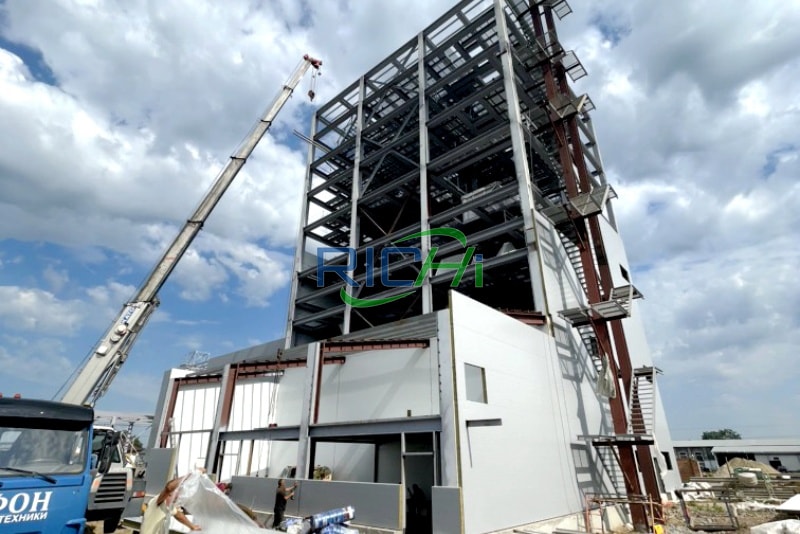
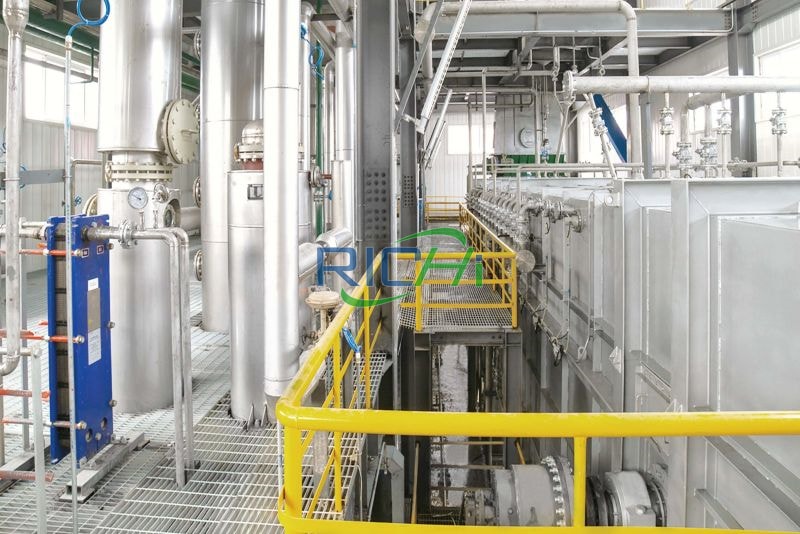
- Select raw material varieties
3.1 Select the types of raw materials commonly used in the local area and design the formula in a targeted manner
For the amino acid and trace element values of raw materials, refer to the “Feed Ingredients and Nutritional Value Table” of the Chinese Feed Database published by the state. As for the energy value of raw materials, since actual measurement is difficult, it is generally not measured and estimated using the energy estimation formula. However, it should be considered that changes in the moisture, crude ash, crude protein, and crude fiber of the raw materials may affect the energy value.
3.2 The formula should be adjusted promptly according to changes in raw material prices
When determining the price of raw materials, it is necessary to clarify whether the raw material price is the inventory price or the market price, and whether it is the forecast price or the average price. Adjust formulas in a timely manner according to price changes, which can reduce formula costs.
3.3 Control the content of crude fiber
The crude fiber content in compound feed is: 2% to 3% for chicks; 5% to 6% or more during the breeding period; 2.5% to 3.5% for laying hens, and generally controlled below 5% for chickens.
3.4 Control harmful and toxic raw materials in feed
Many feed raw materials contain some natural toxic and harmful substances. For example, rapeseed meal, cottonseed meal, etc. are not used in chick feed, salmonella (pathogenic bacteria) cannot be contained in compound feed, and the heavy metal content should not exceed the specified content.
3.5 The volume of feed composition should be adapted to the size of the chicken’s digestive tract
If the volume of the hen feed is too large, it can cause excessive burden on the digestive tract and affect the digestion and absorption of the hen feed; if the volume is too small, even if the nutrients have met the needs, the animal will still feel hungry and in a state of restlessness, which is not conducive to normal growth and production. .
3.6 Formula design should have delay properties
It is necessary to consider the impact of changes in raw materials on the color, smell and other indicators of the feed, on animal stress, palatability, market acceptance and other factors.
- Feed formula
4.1 Formula design principles
- First of all, it must adapt to market demand and be market competitive;
- Secondly, it must be scientifically advanced and use new knowledge and achievements in the field of animal nutrition in the formula;
- Thirdly, it must be economical, and on the premise of ensuring the nutrition of livestock and poultry, the feed formula The cost is the lowest;
- Fourth, it must be operable, and on the premise of meeting market demand, it must make full use of a variety of raw material types according to the company’s own conditions to ensure stable feed quality;
- Fifth, the formula must be legal, and no additions are explicitly prohibited by the state. feed additives.
4.2 Calculation method of feed formula
In the past, feed formula calculations used simple trial-and-error methods, cross methods, diagonal methods and other methods. Nowadays, most hen feed making machine plantss use computers to design feed formulas, which not only greatly improves the calculation efficiency, but also comprehensively considers the relationship between nutrition and cost, improves resource utilization, and reduces feed costs.
- Precautions for preparing concentrated feed
Hen feed making machine plants usually design 20% to 40% concentrated feed. If the proportion is too low, the types of feeds that users need to mix will increase, the cost will be too high, and it will be difficult for feed mills to control the final product; if the proportion is too high, the meaning of concentration will be lost.
Usually, 30% to 5% of concentrated feed is designed for laying chicks, 30% to 40% for growing chickens, and 35% to 40% for laying hens. There are two calculation methods: one is calculated from the compound feed; the other is calculated from the set ratio and then prepared according to this ratio.
When users apply concentrated feed, they should use it according to the formula recommended by the feed factory, so that quality control can be easily carried out. Due to changes in raw materials, users should recalculate the ratio to meet the main indicators.
Hen feed making machine manufacturer – RICHI MACHINERY
professional team
We have a professional technical team to tailor personalized hen feed making machine system solutions for you, providing one-stop services from early design, production and manufacturing to post-construction, maintenance, etc. Committed to customizing whole-plant personalized solutions for customers such as animal energy feed and biological fermentation feed.
One-to-one guidance
After hen food making machines installation and debugging are completed, we will provide one-on-one technical guidance according to the customer’s actual situation, and be responsible for training the operator until the customer can fully operate the production.
Qualification
The company has passed ISO9001 international quality management system certification, and its export products have obtained CE certification from EU countries. So far, it has obtained 27 utility model patents and 5 invention patents.
Our factory
RICHI Machinery relies on professional and sophisticated hen feed making machine, perfect technological processes, and modern production management to tailor-make high-quality, high-precision products for domestic and foreign customers.